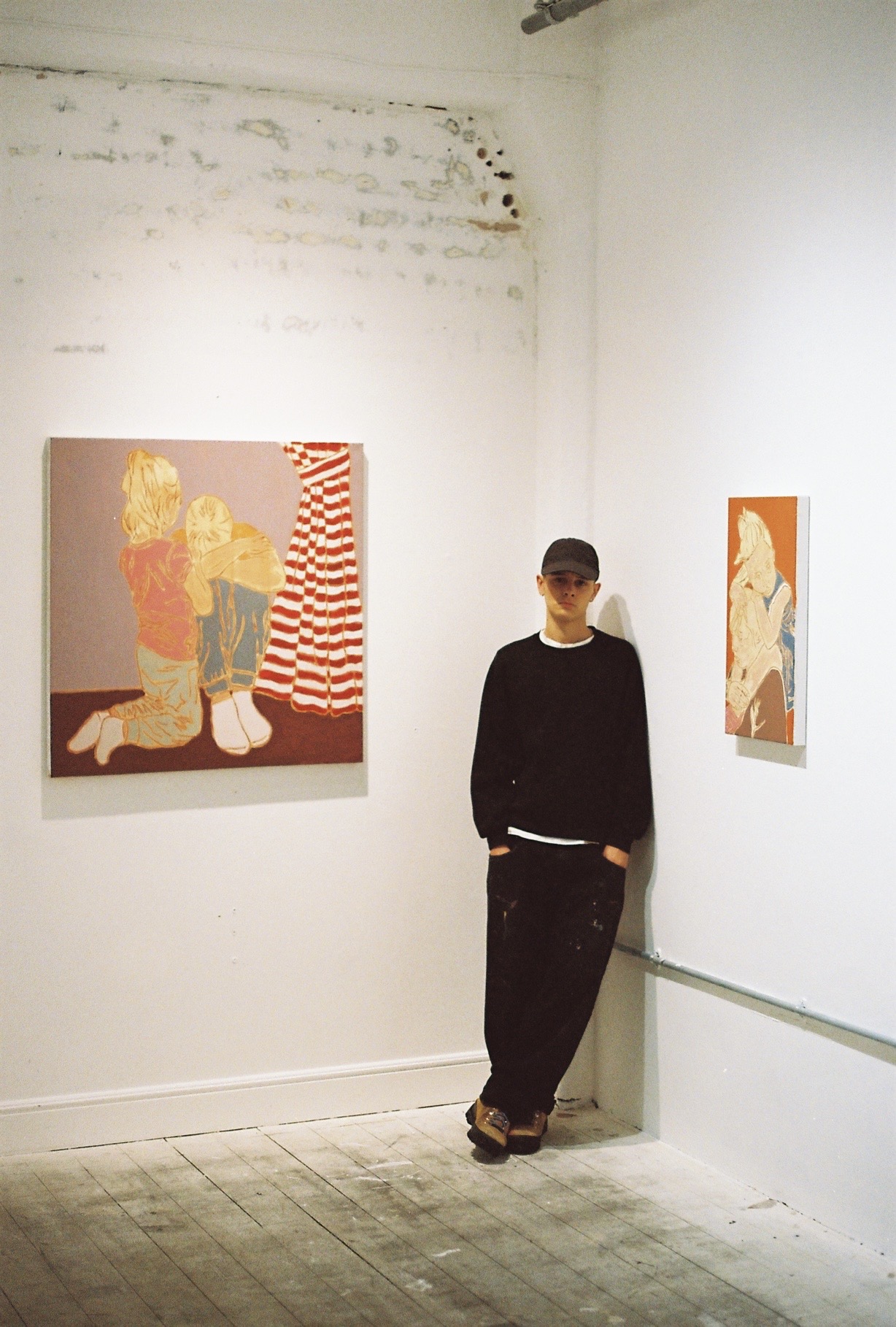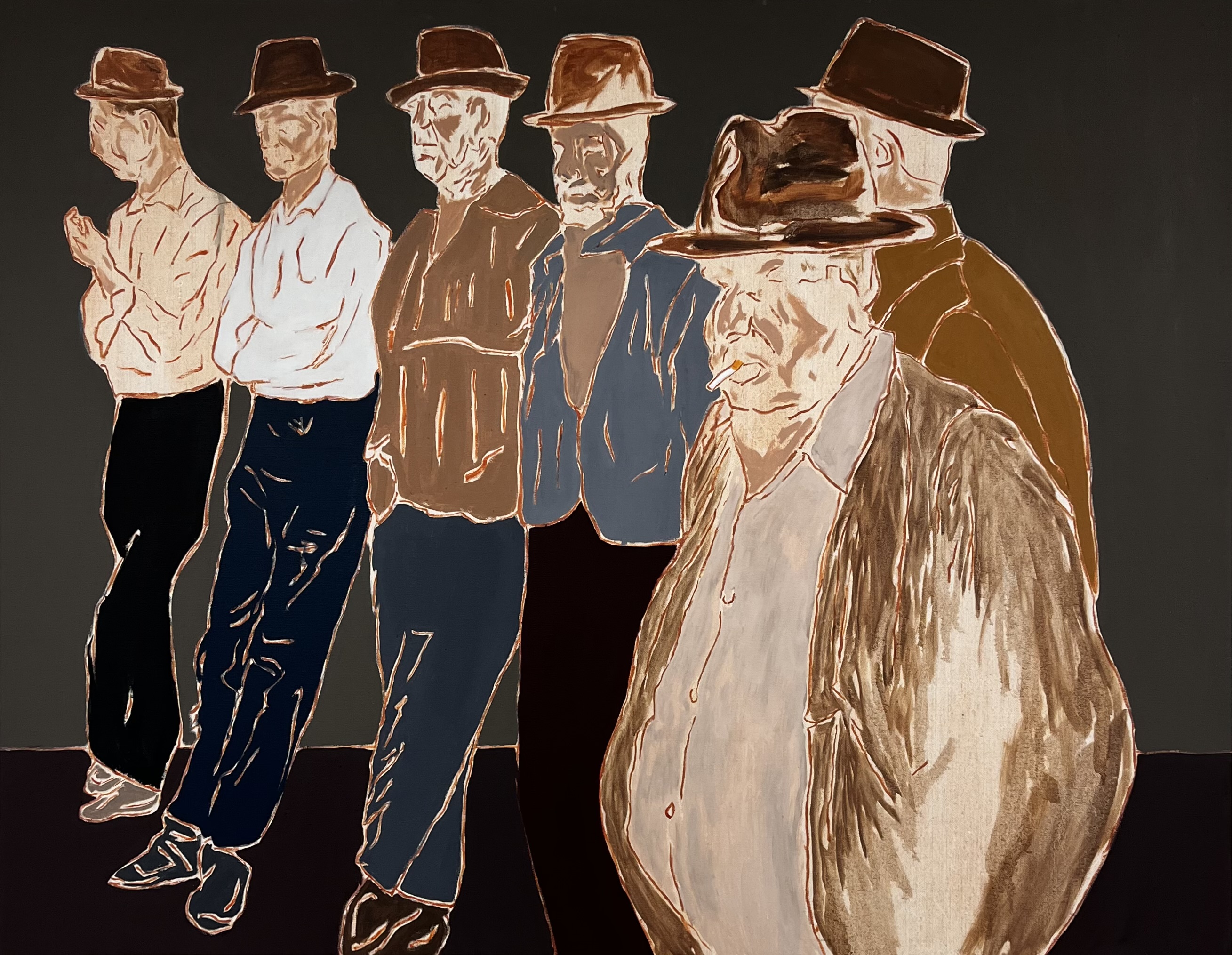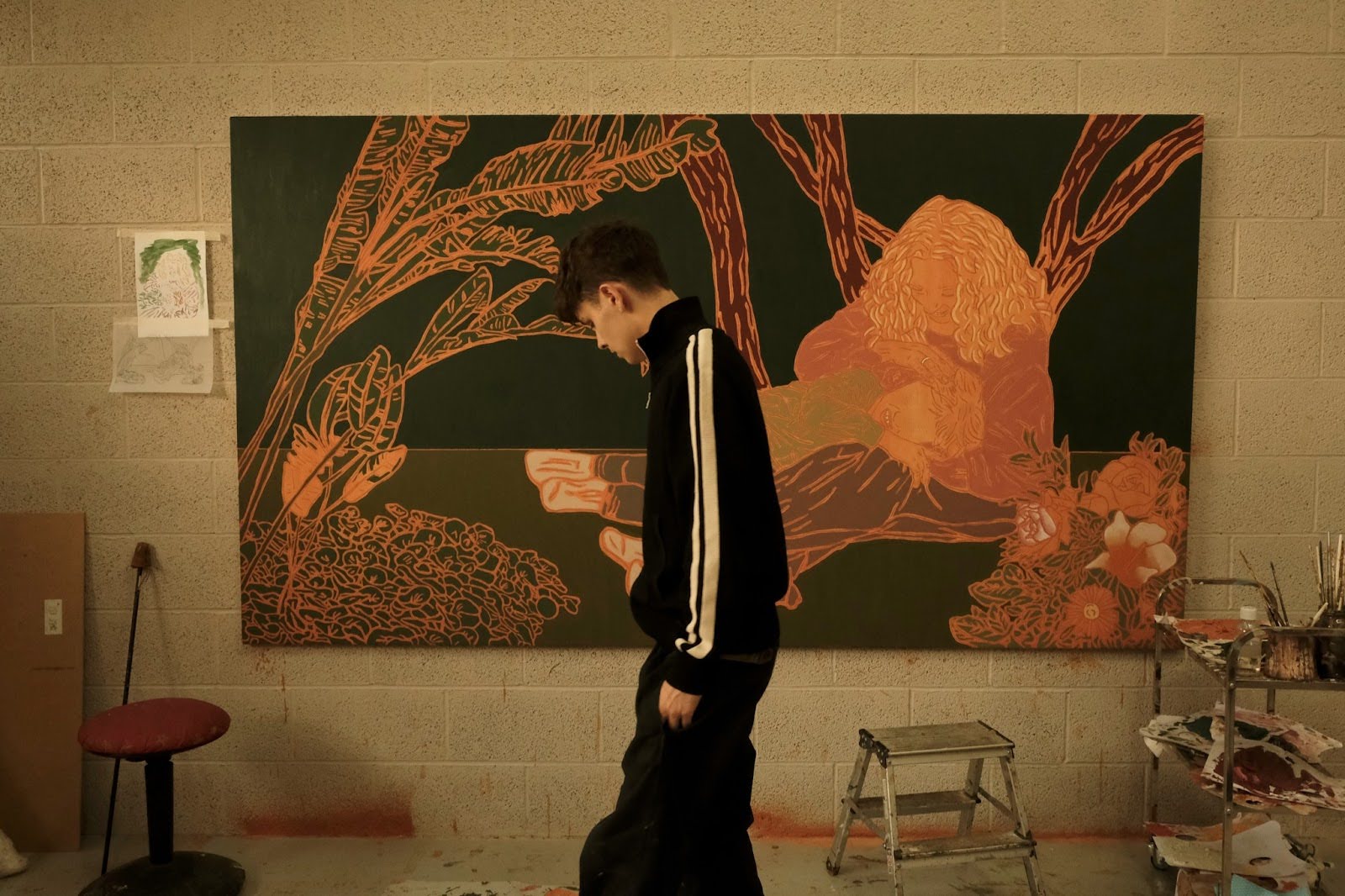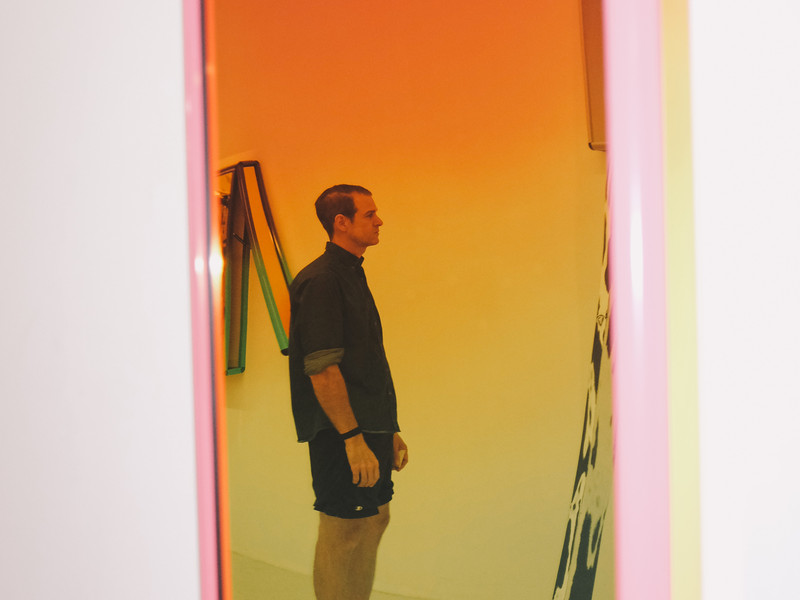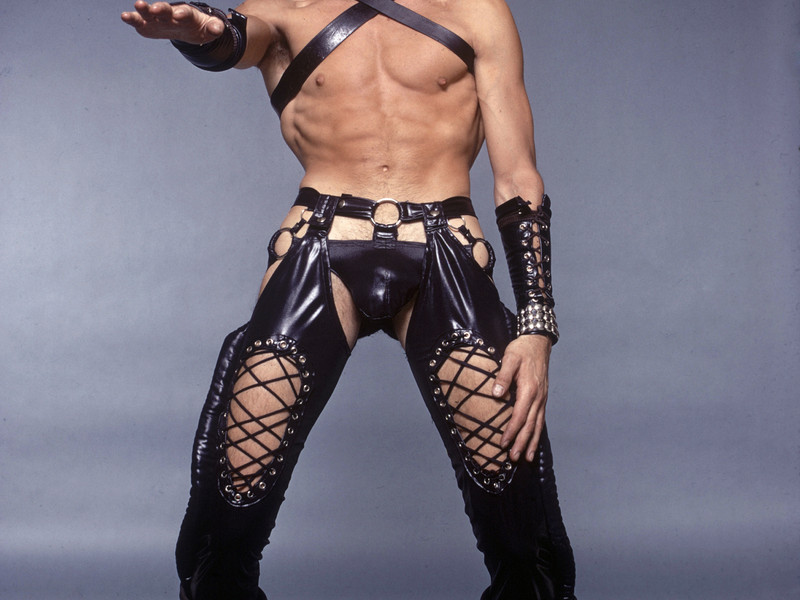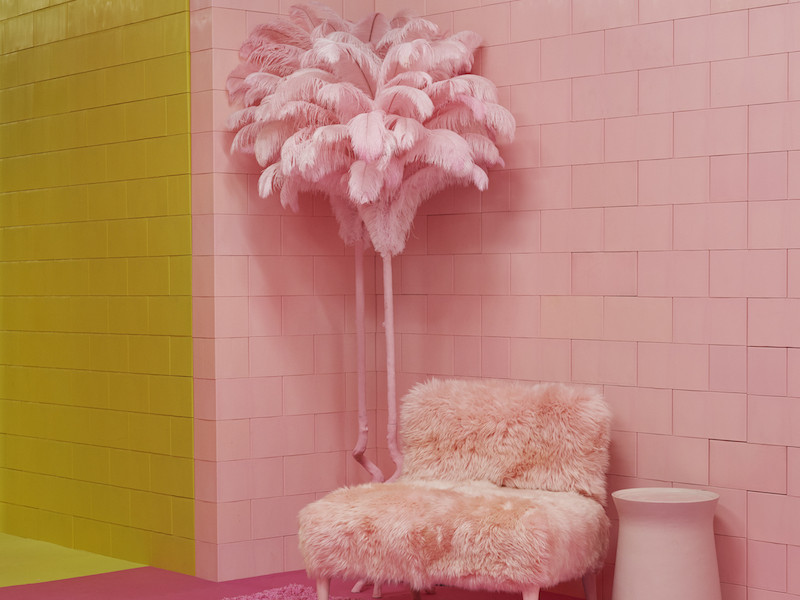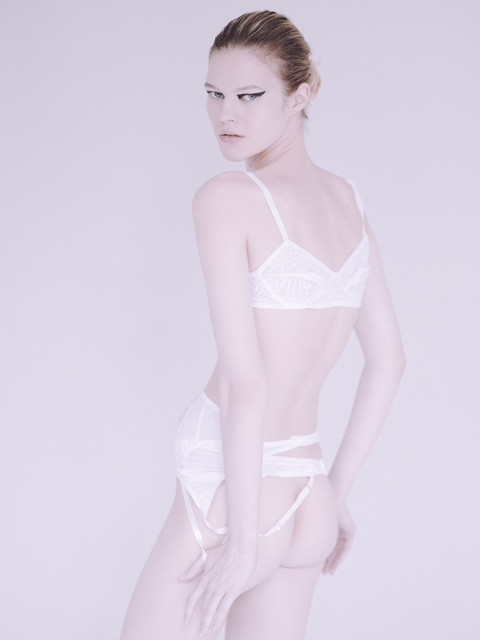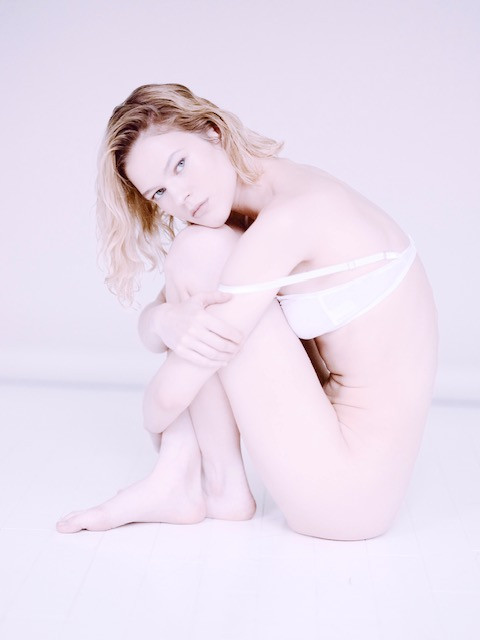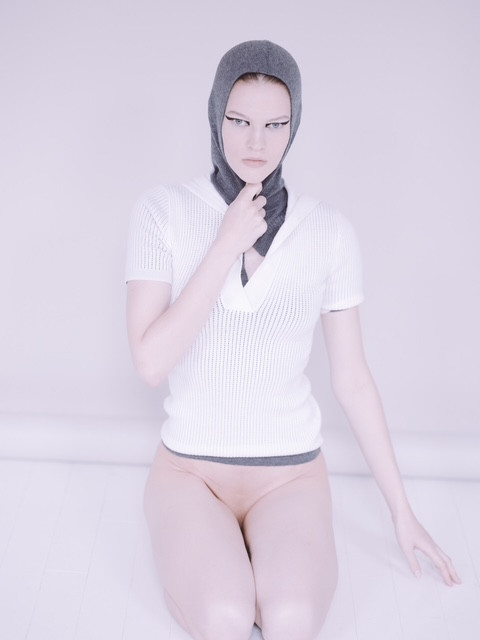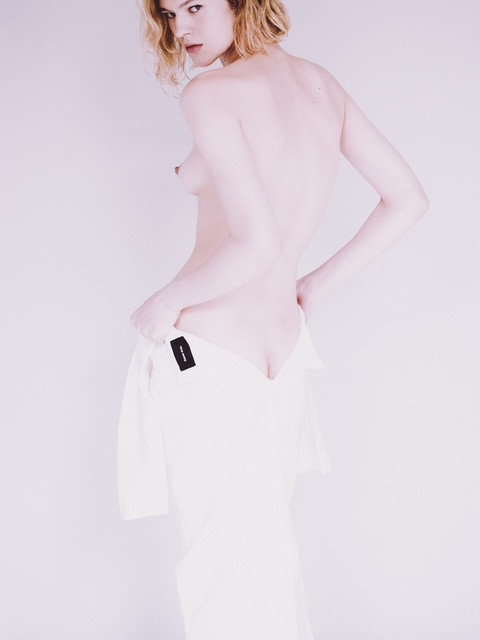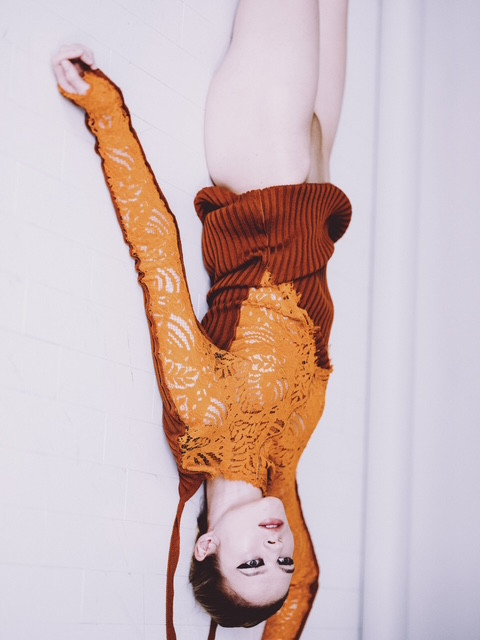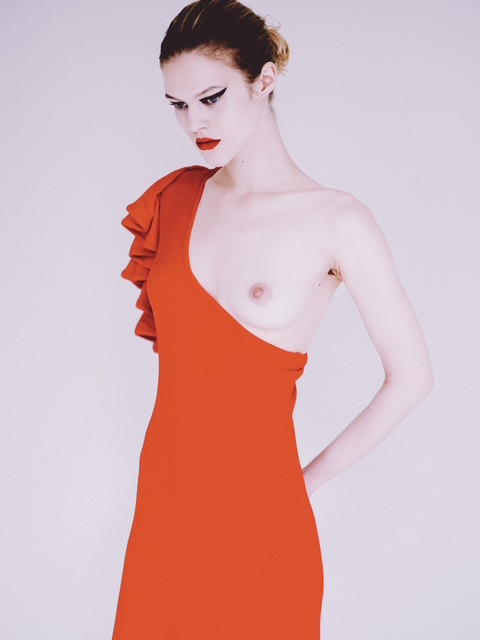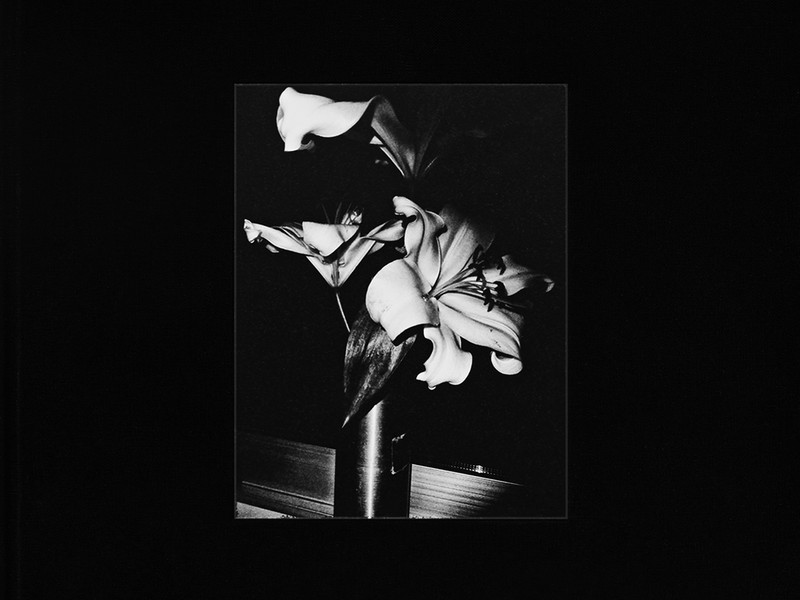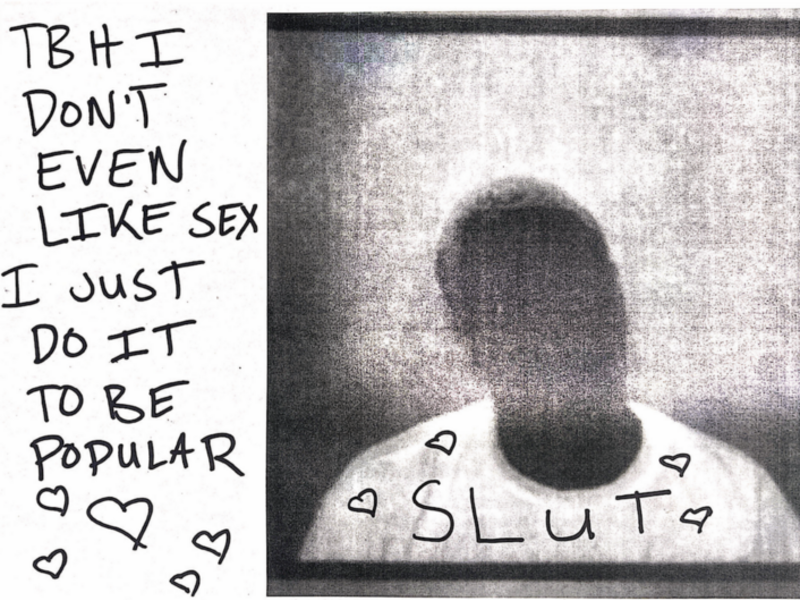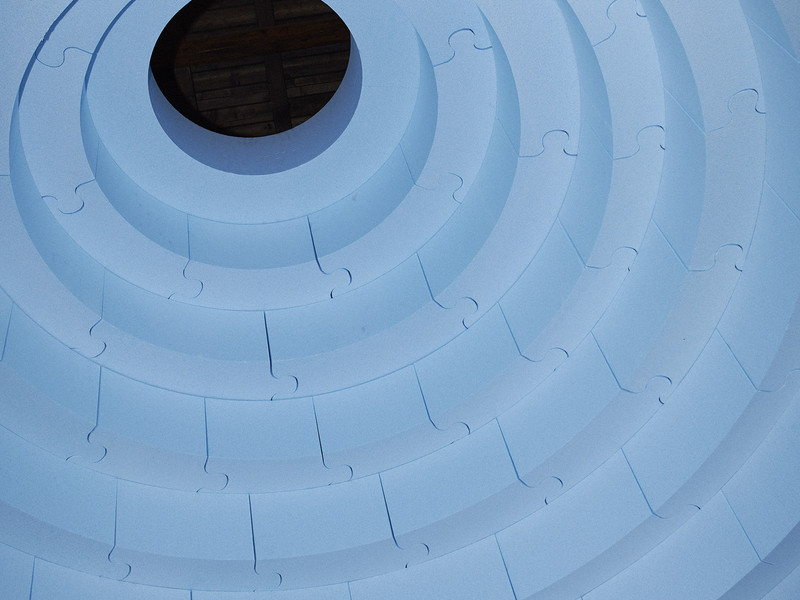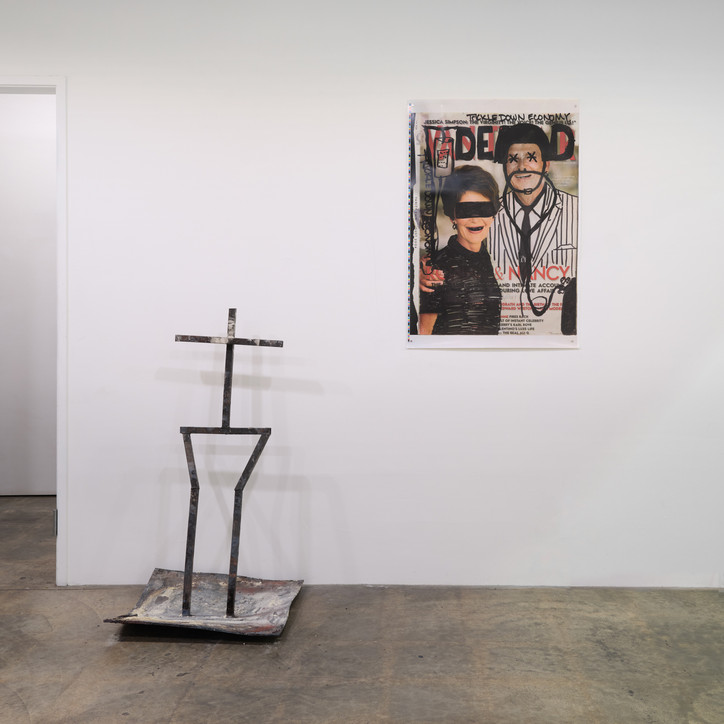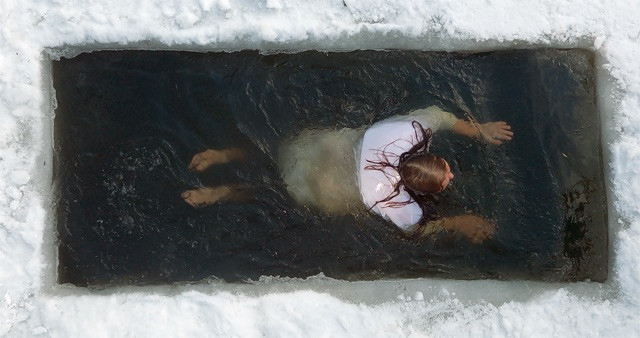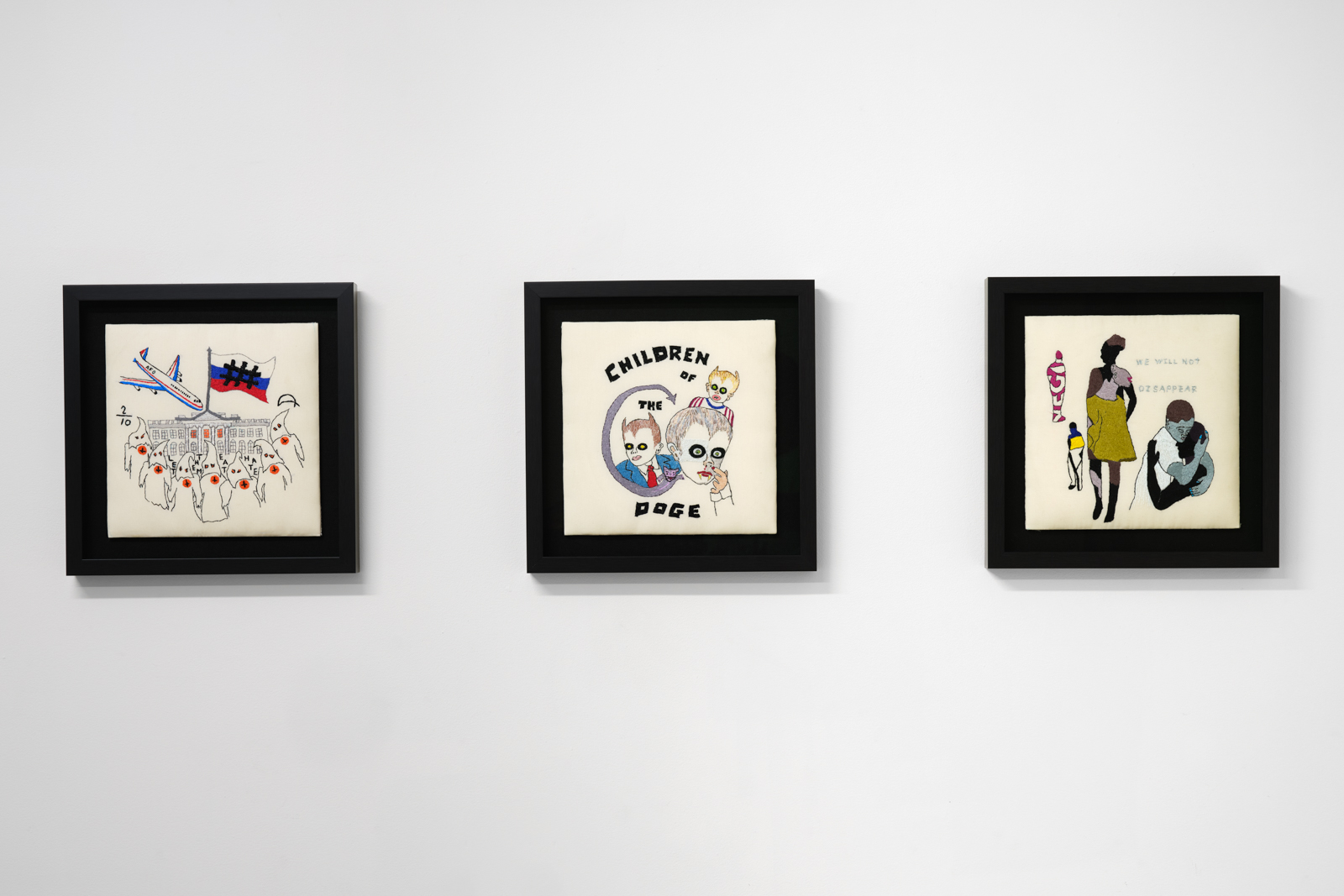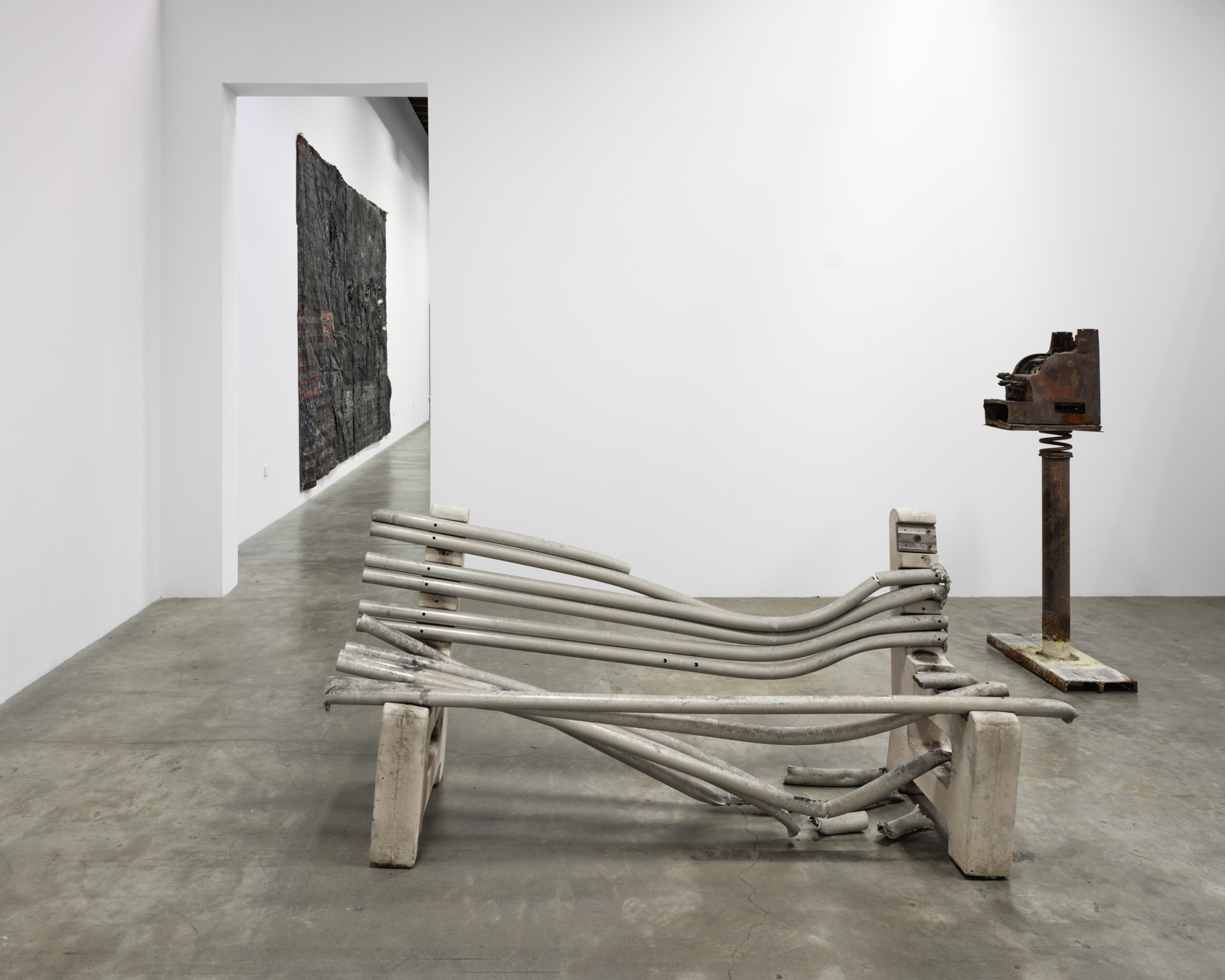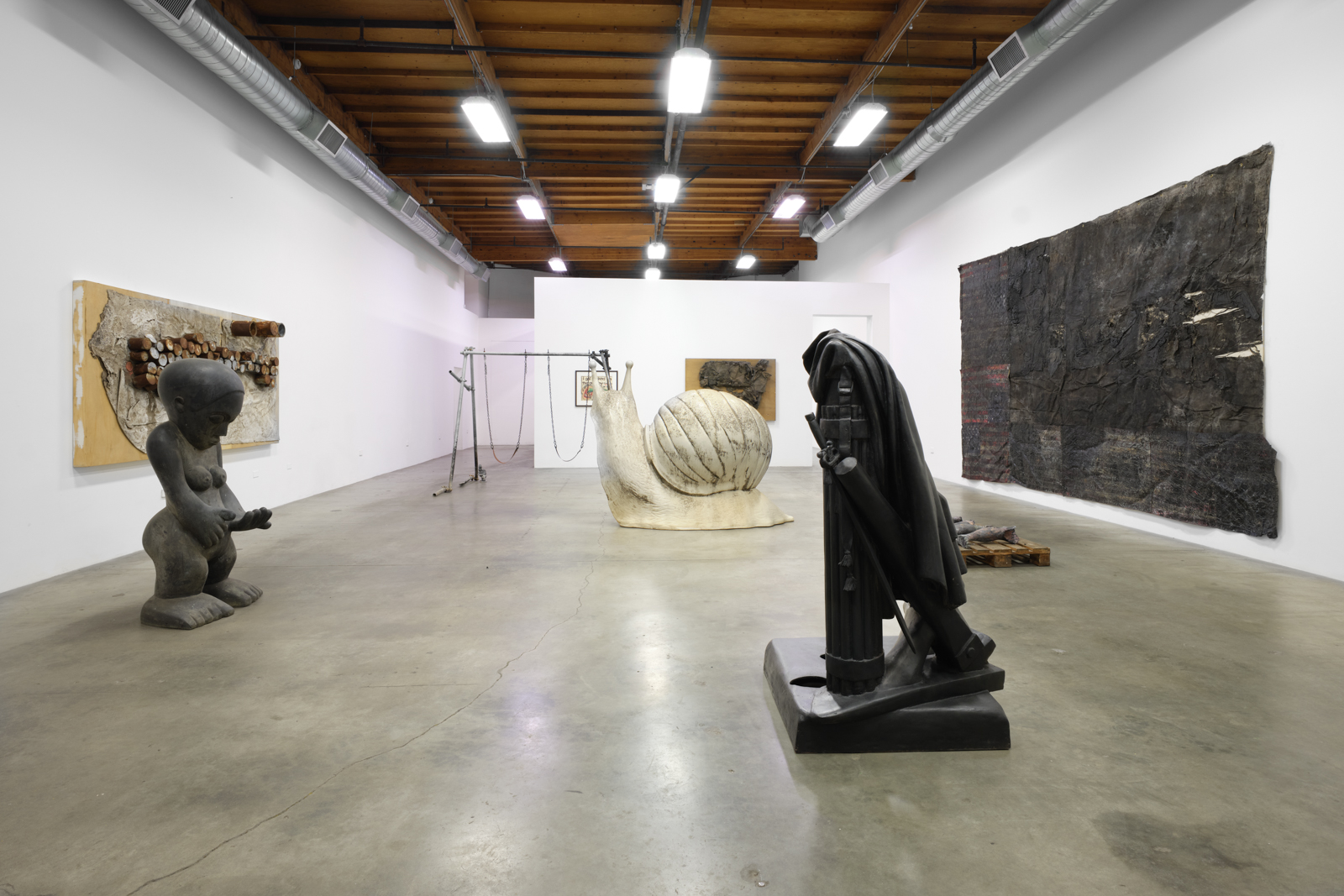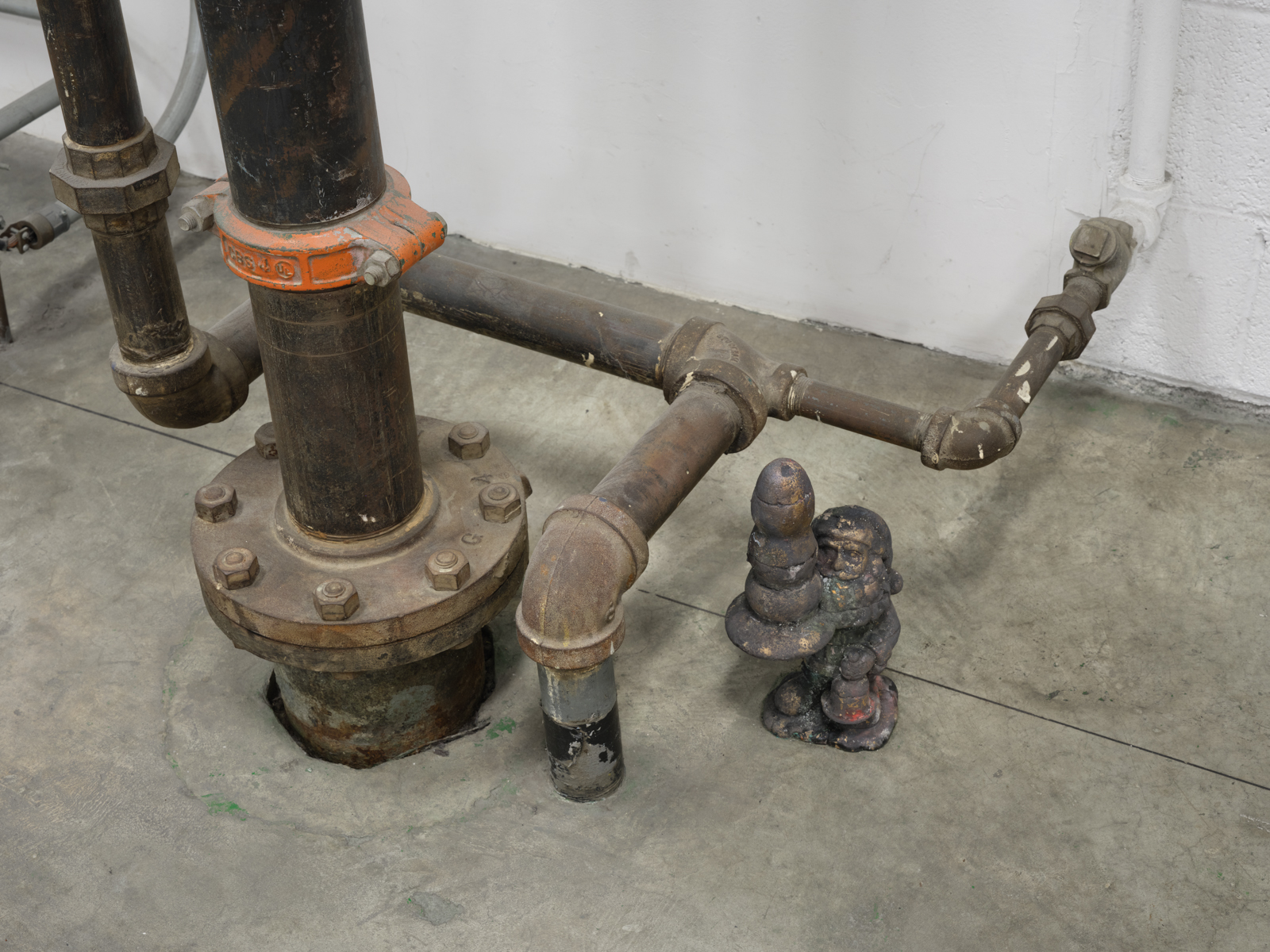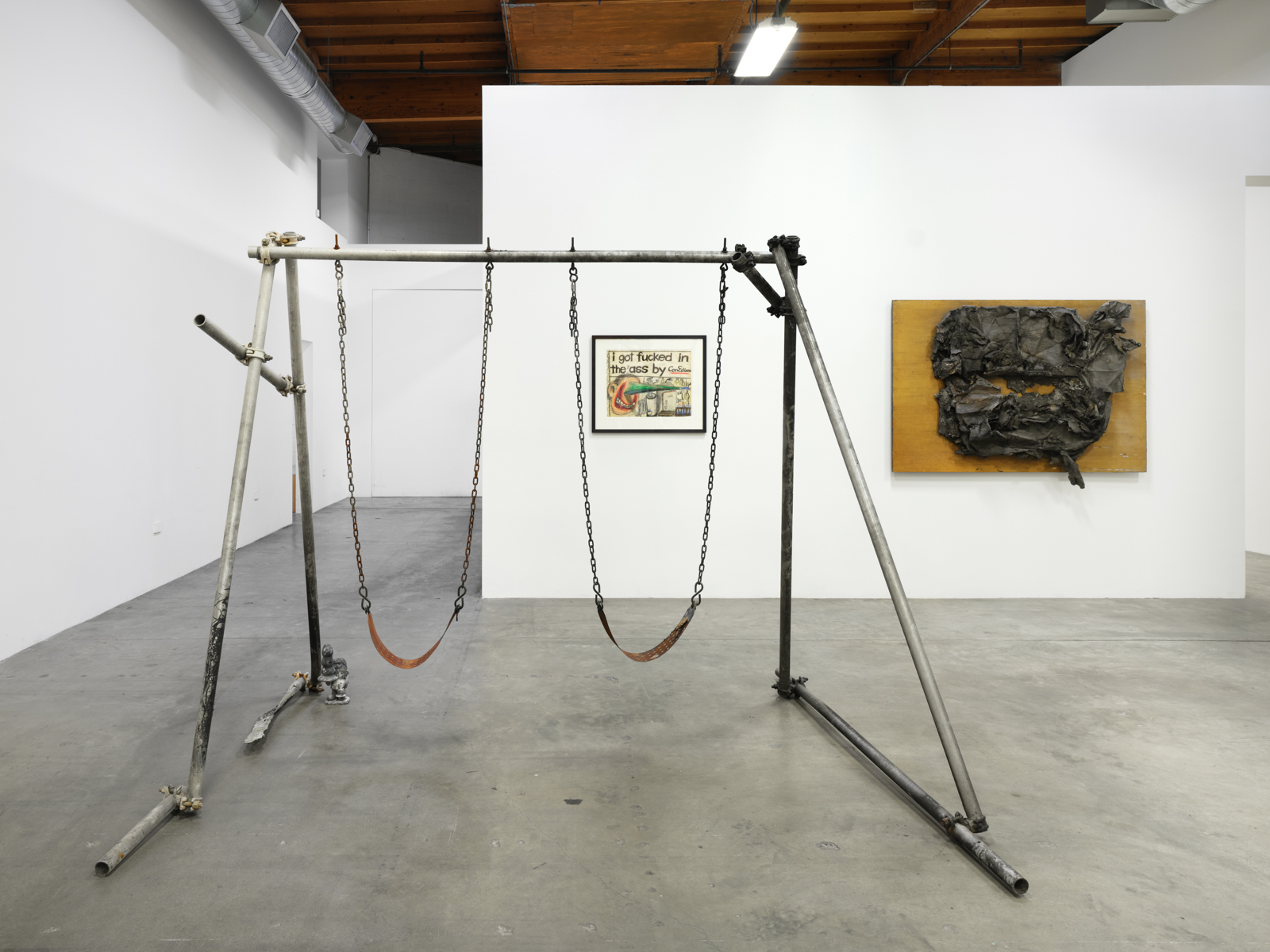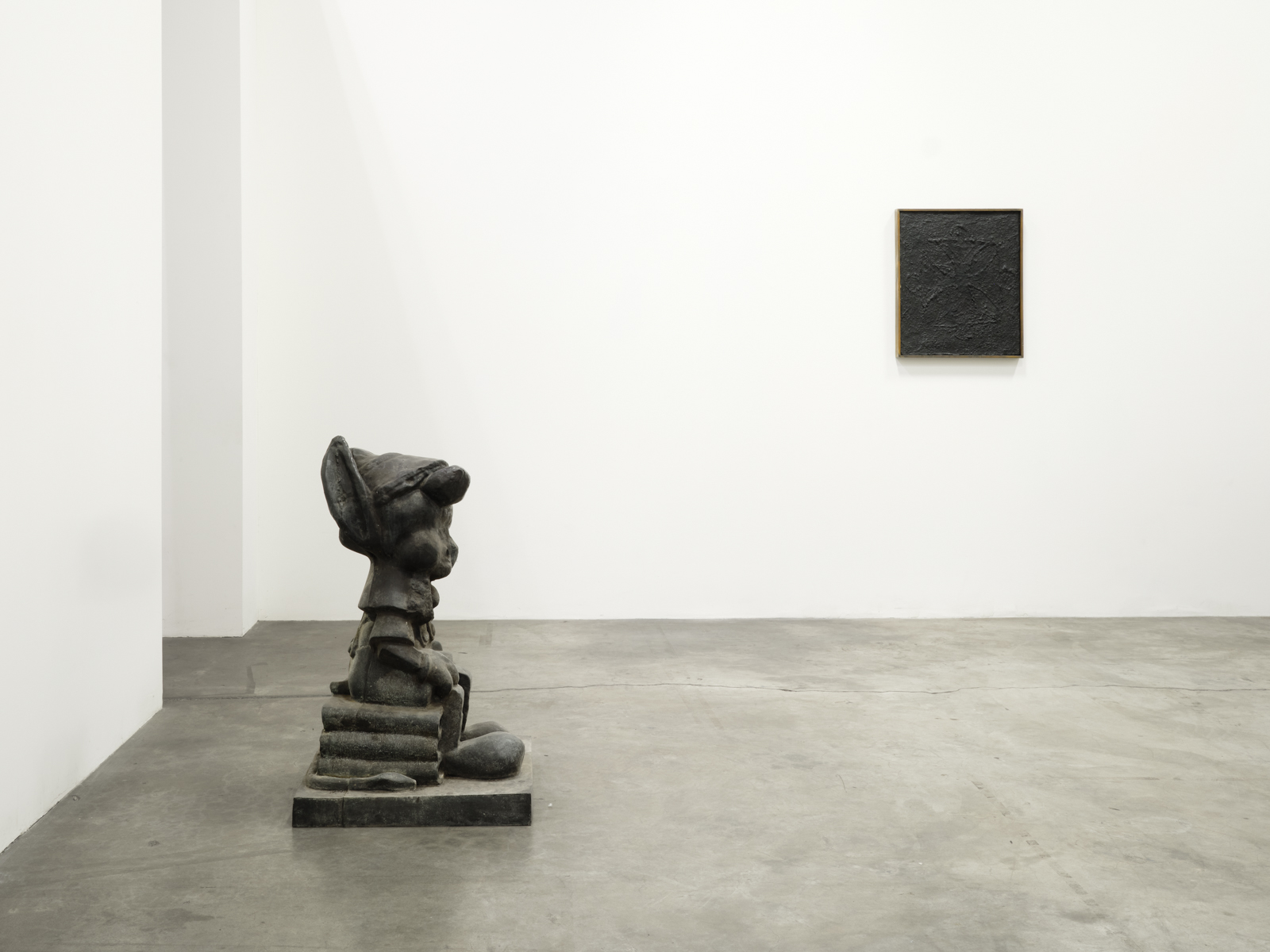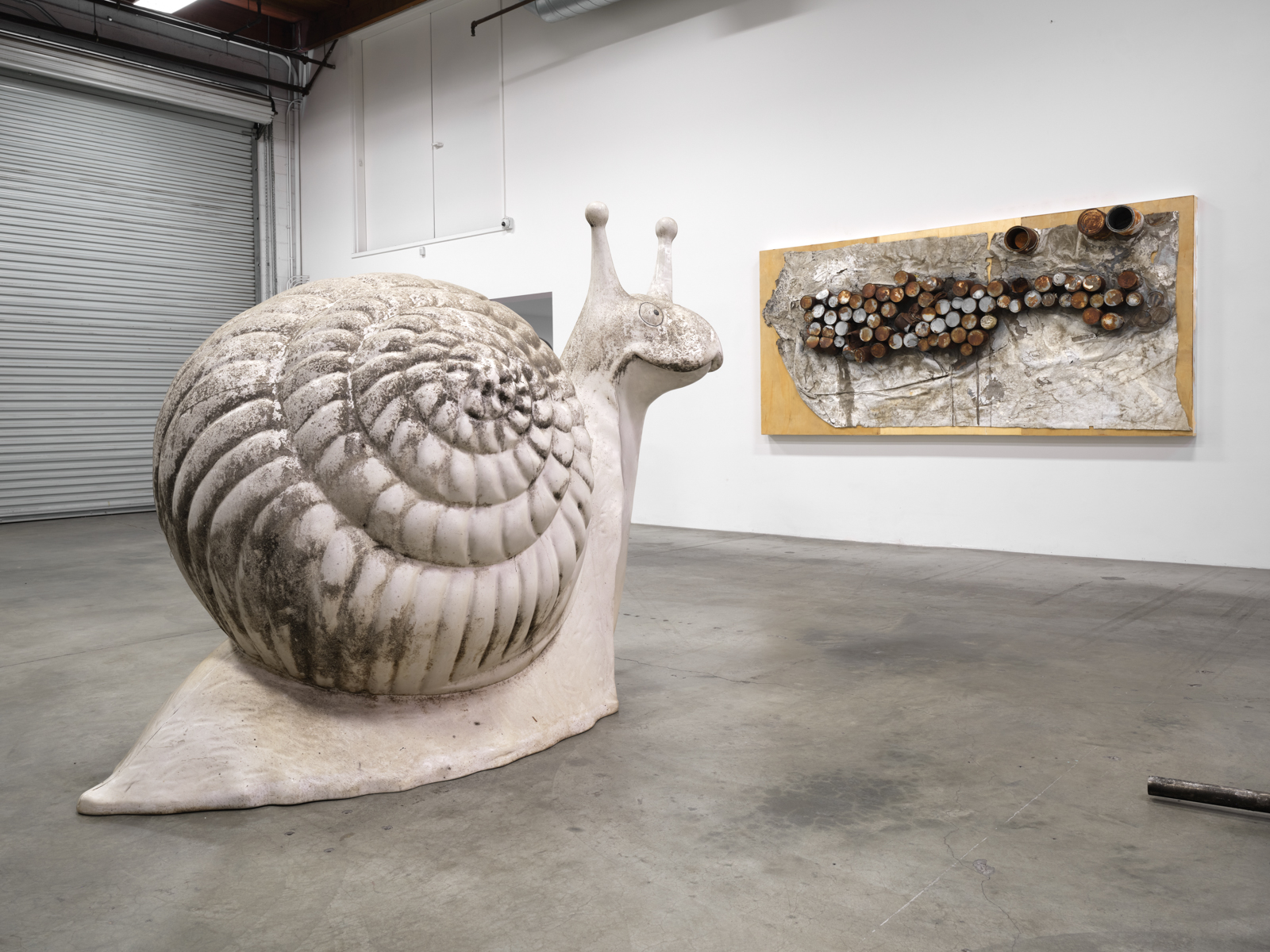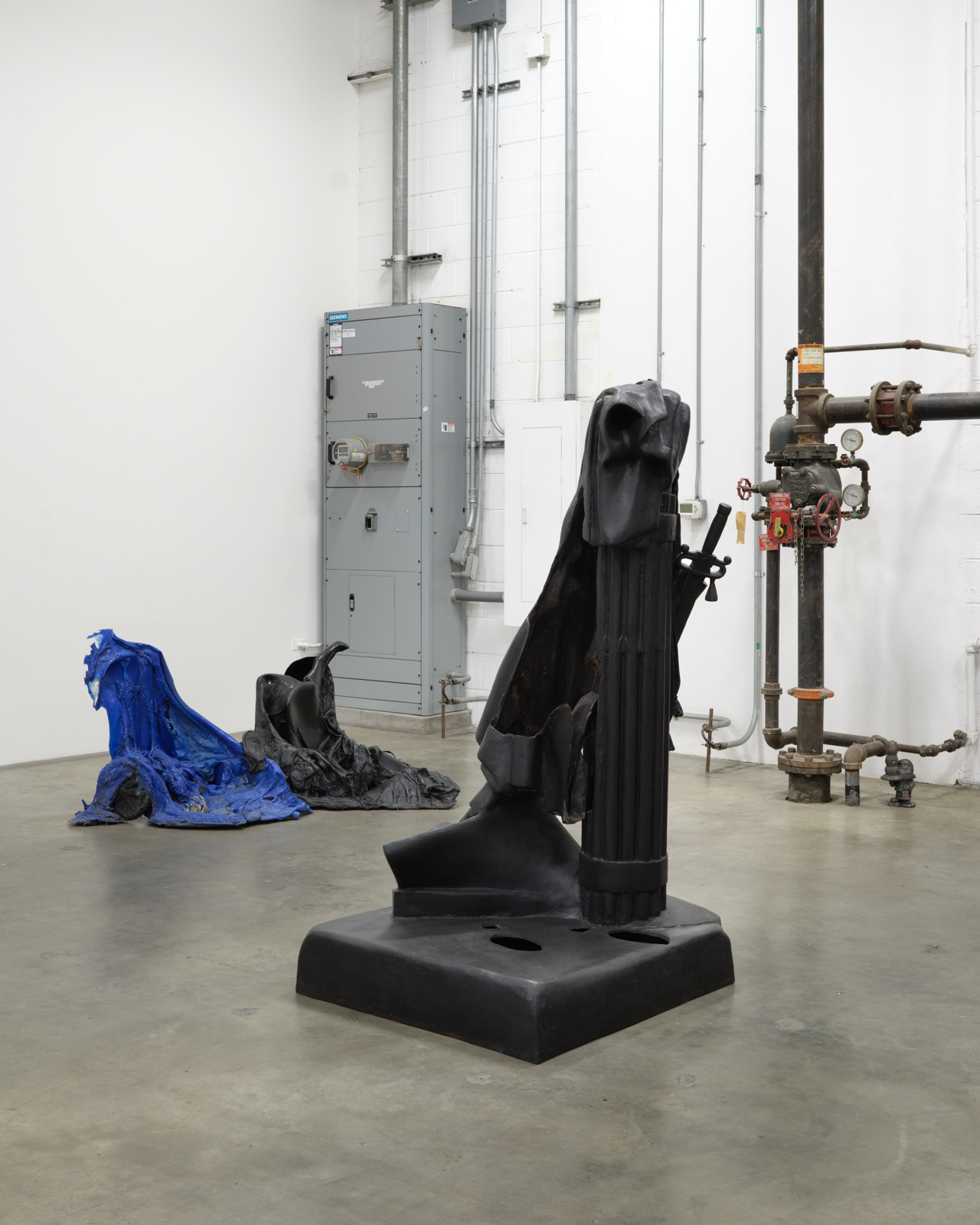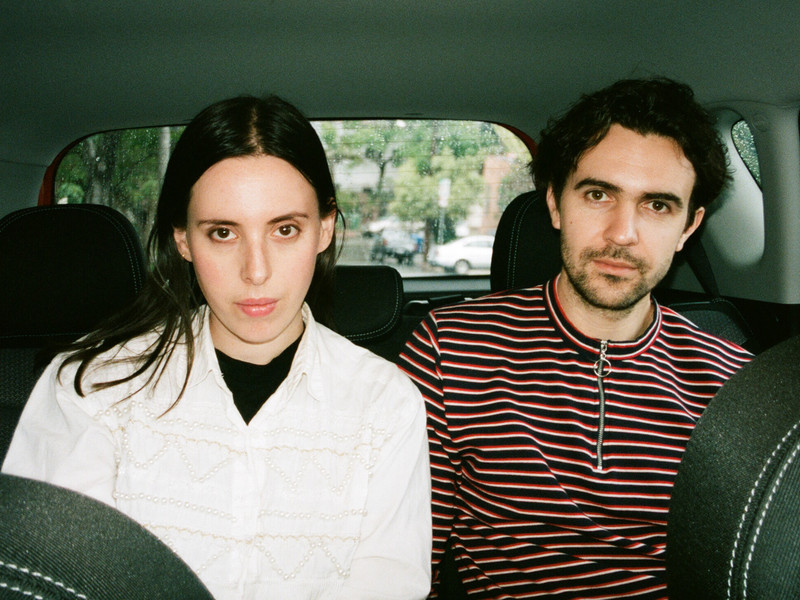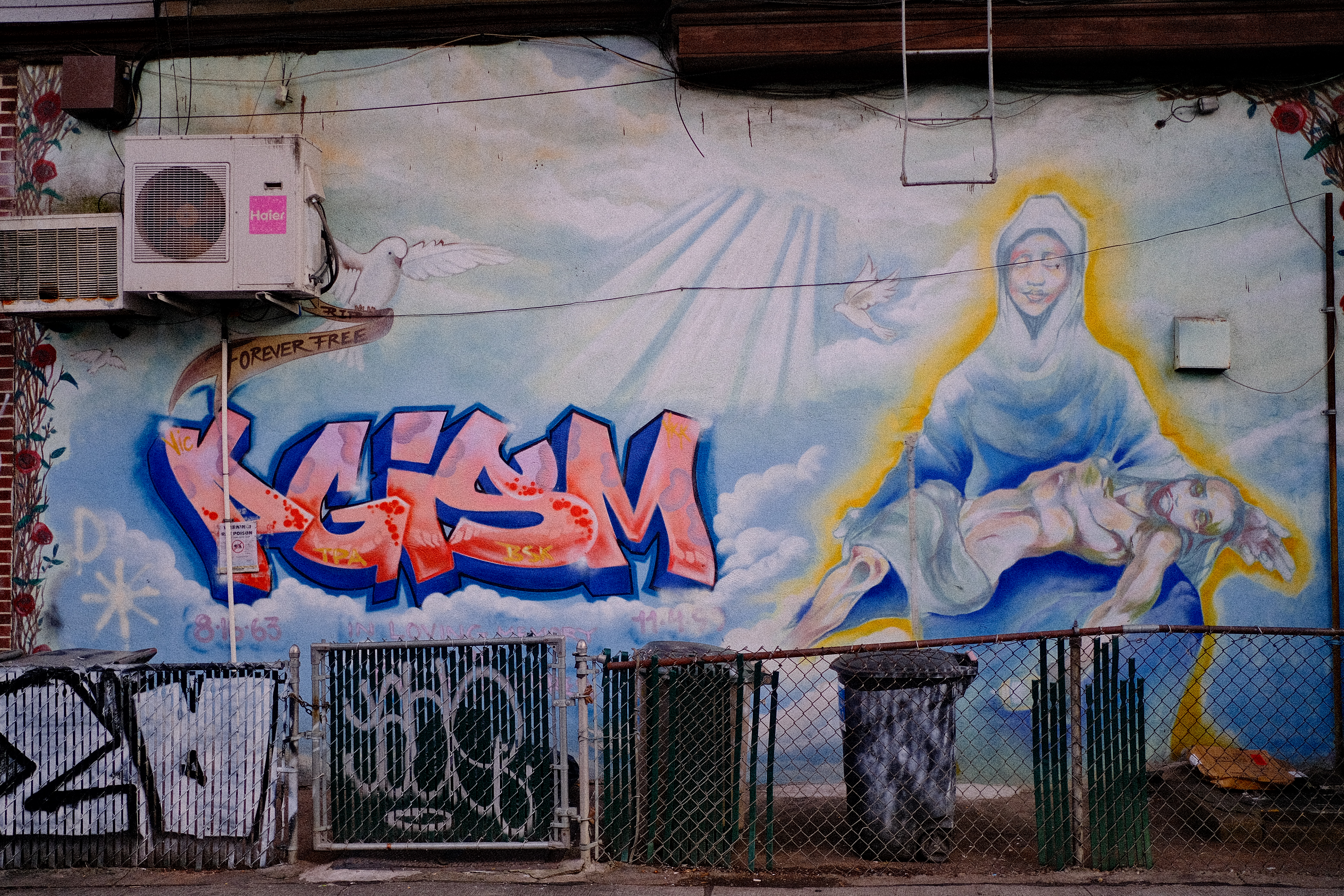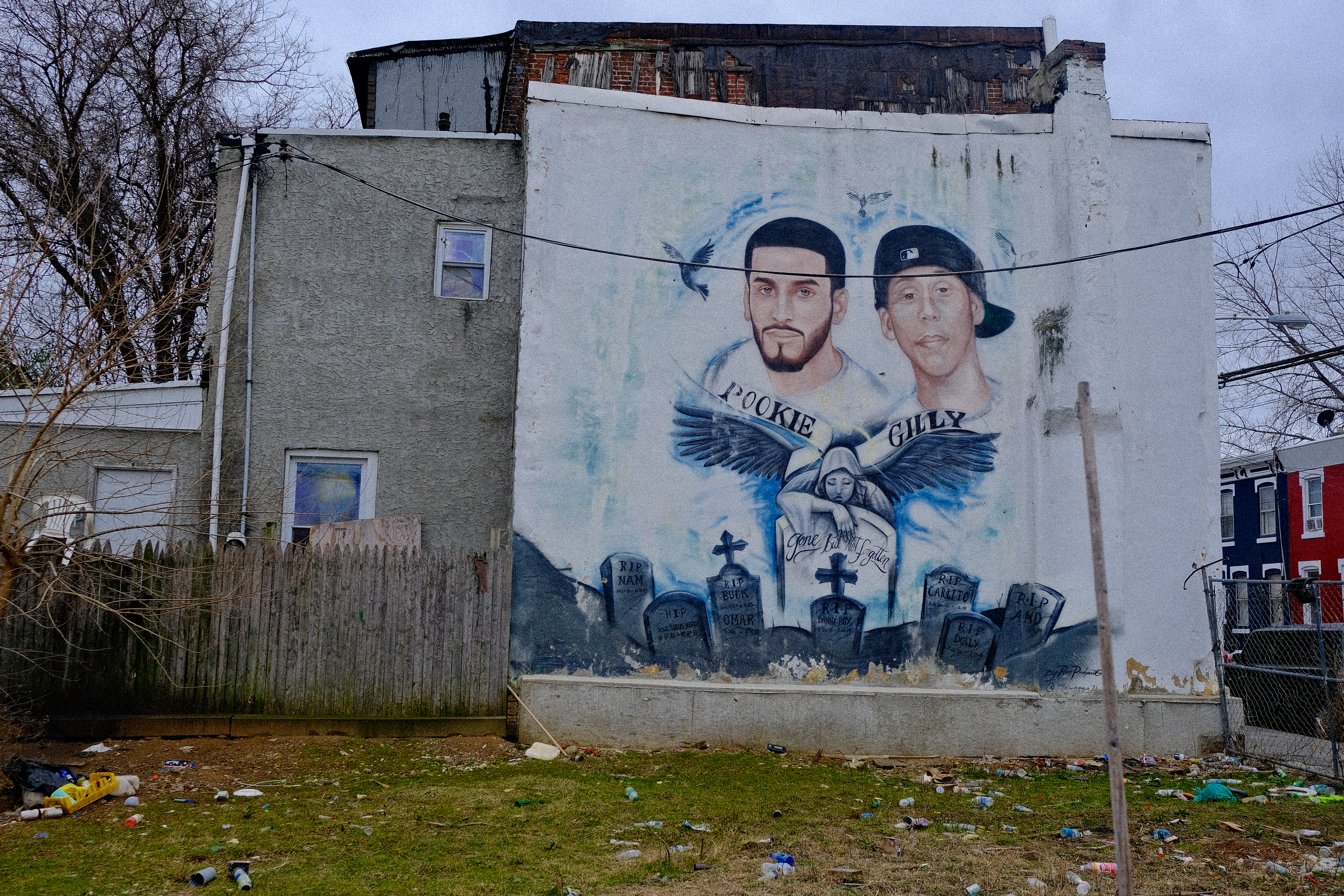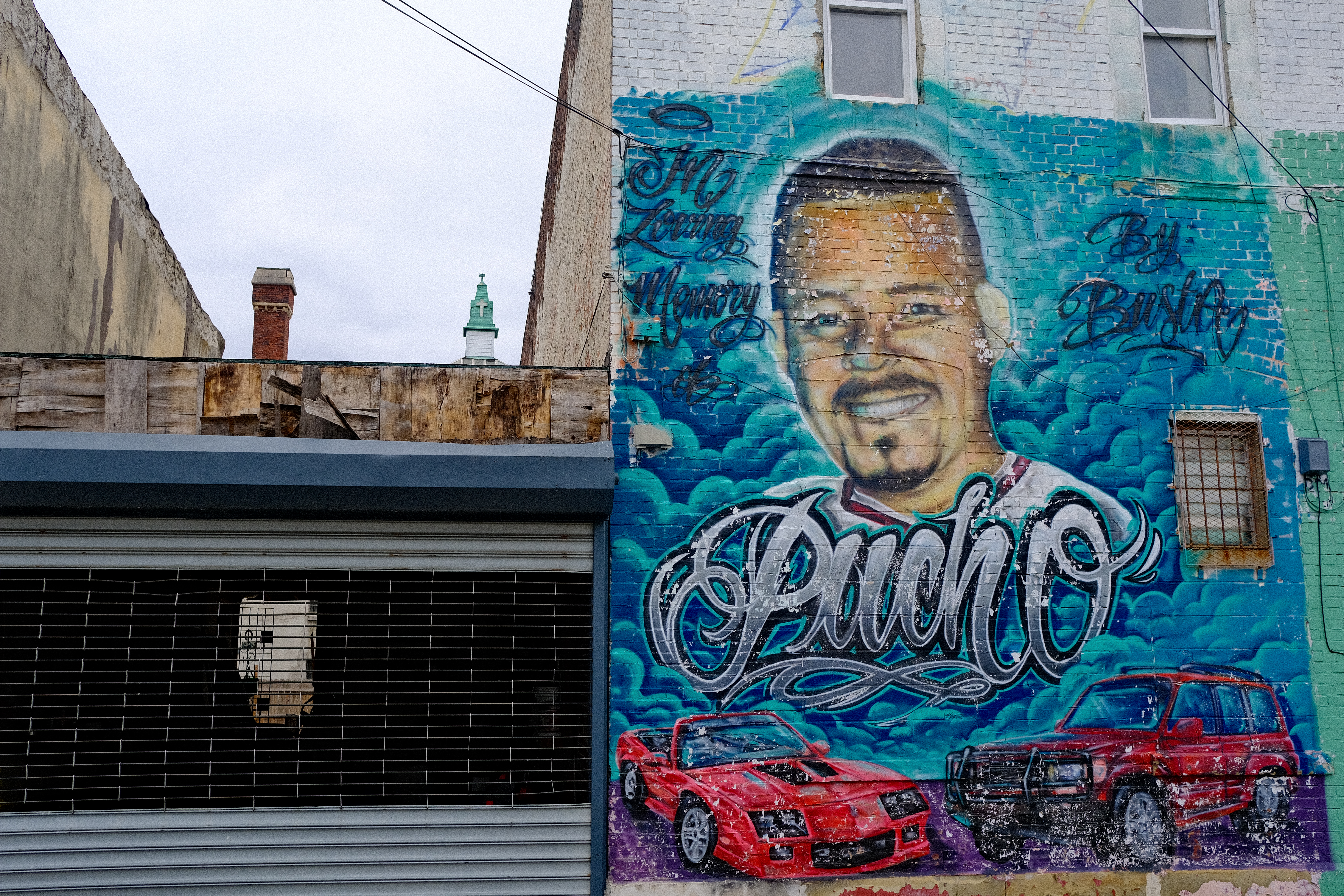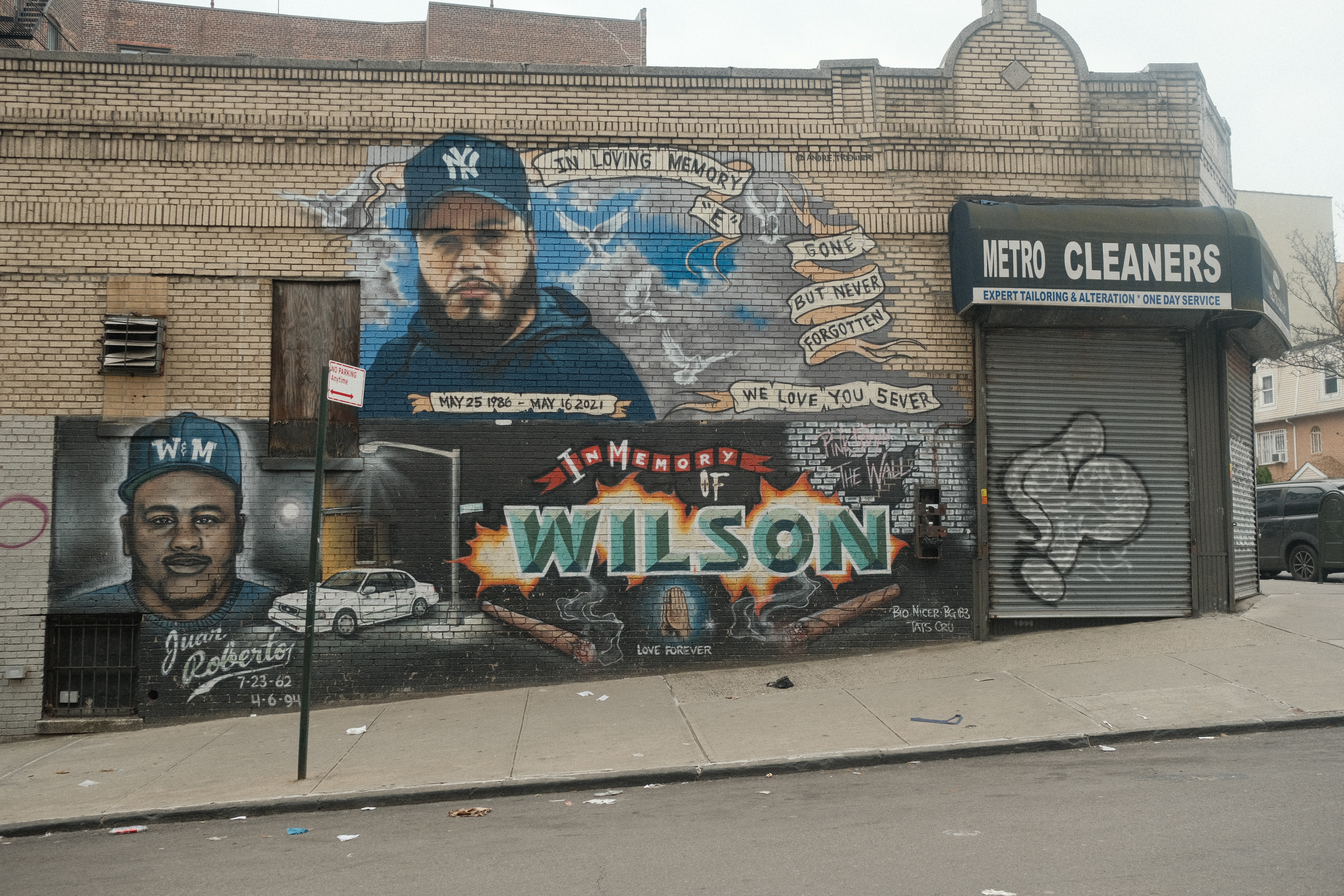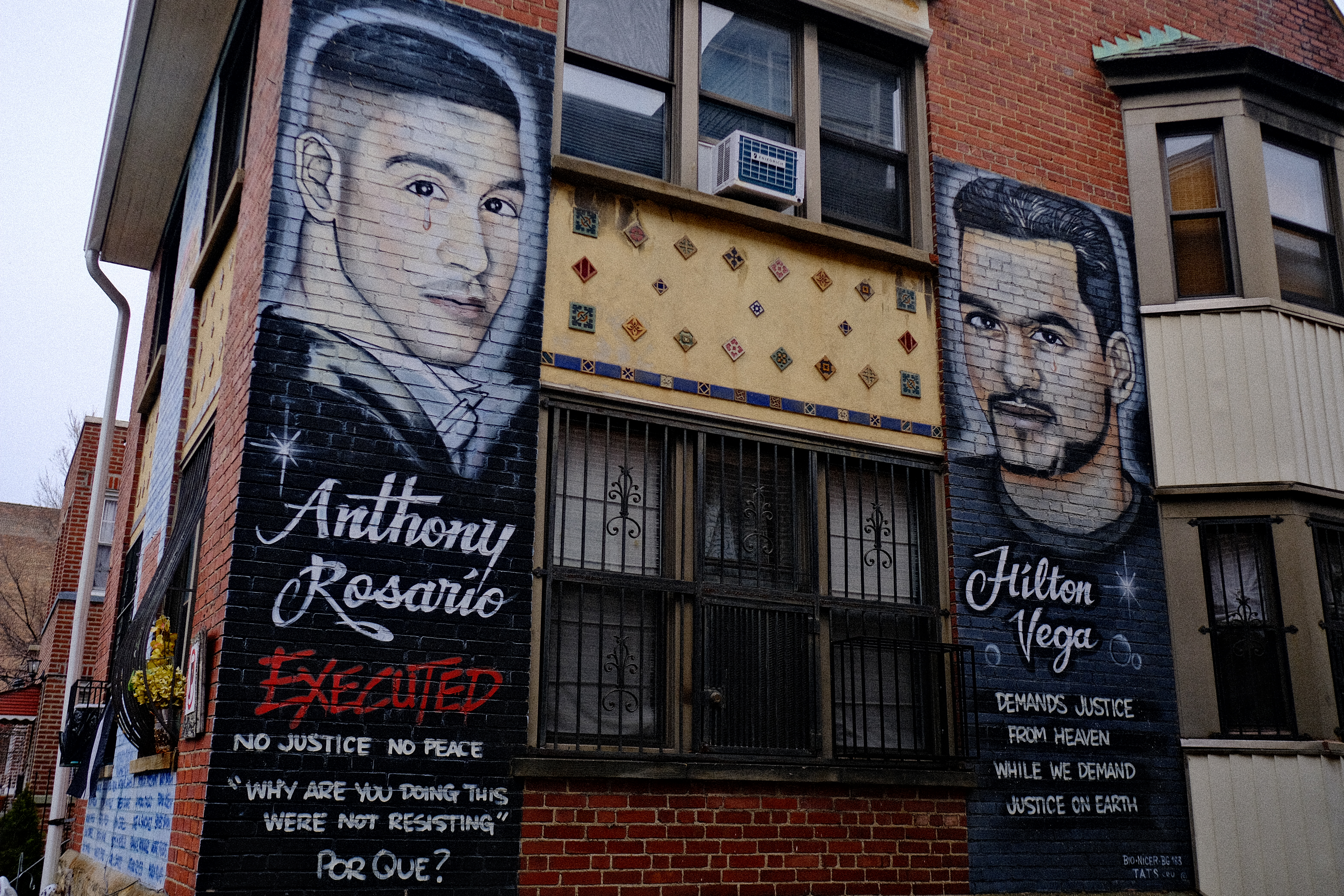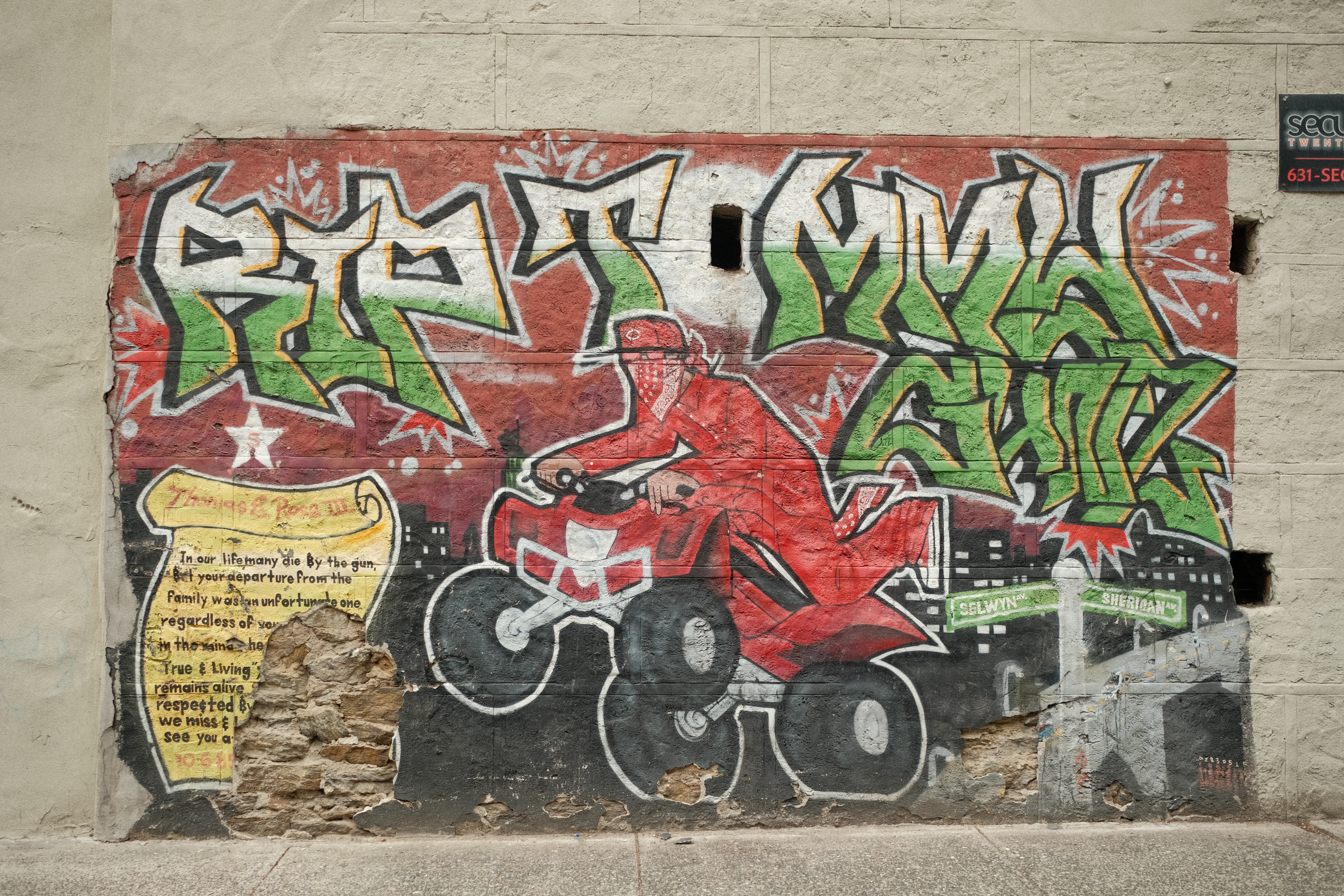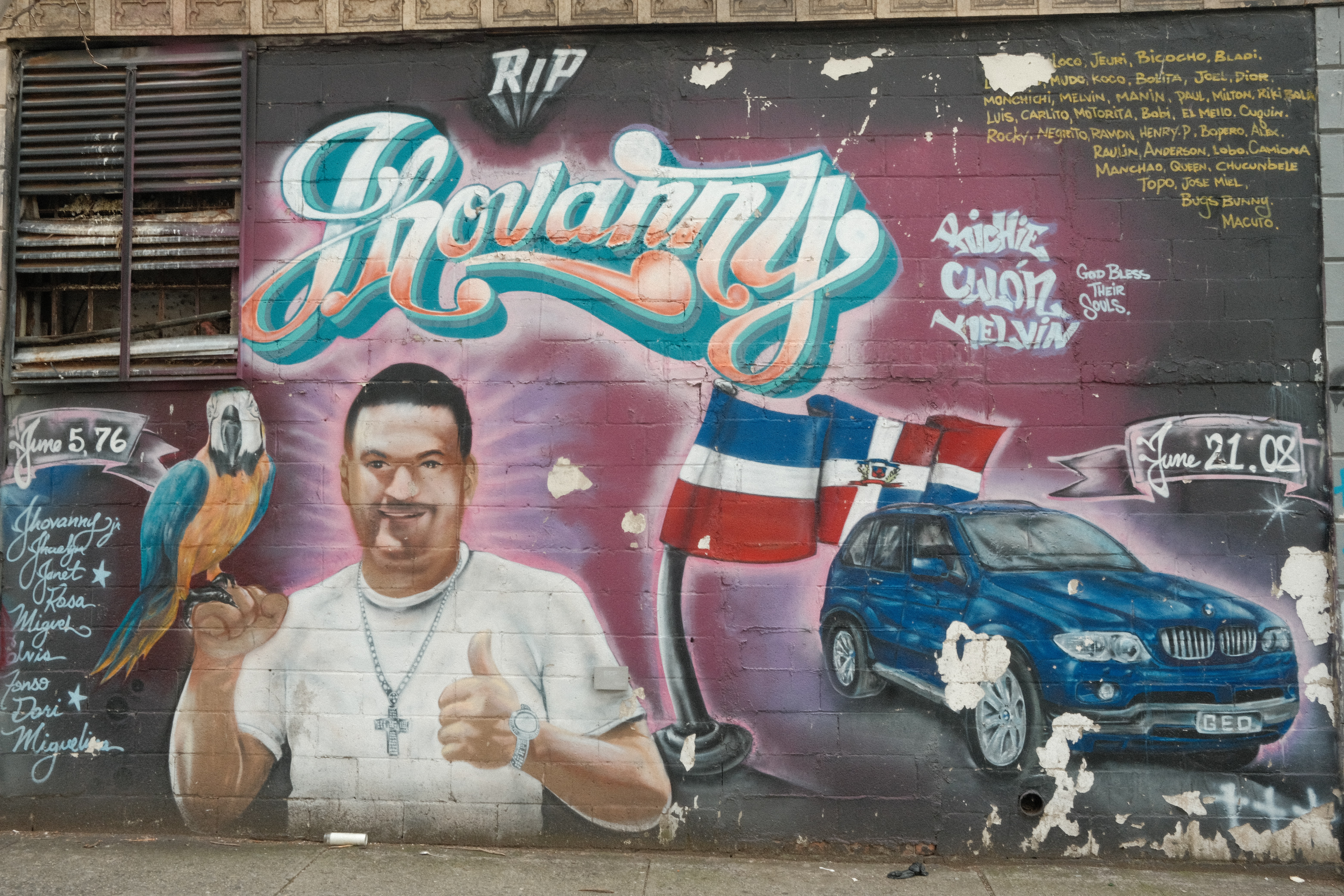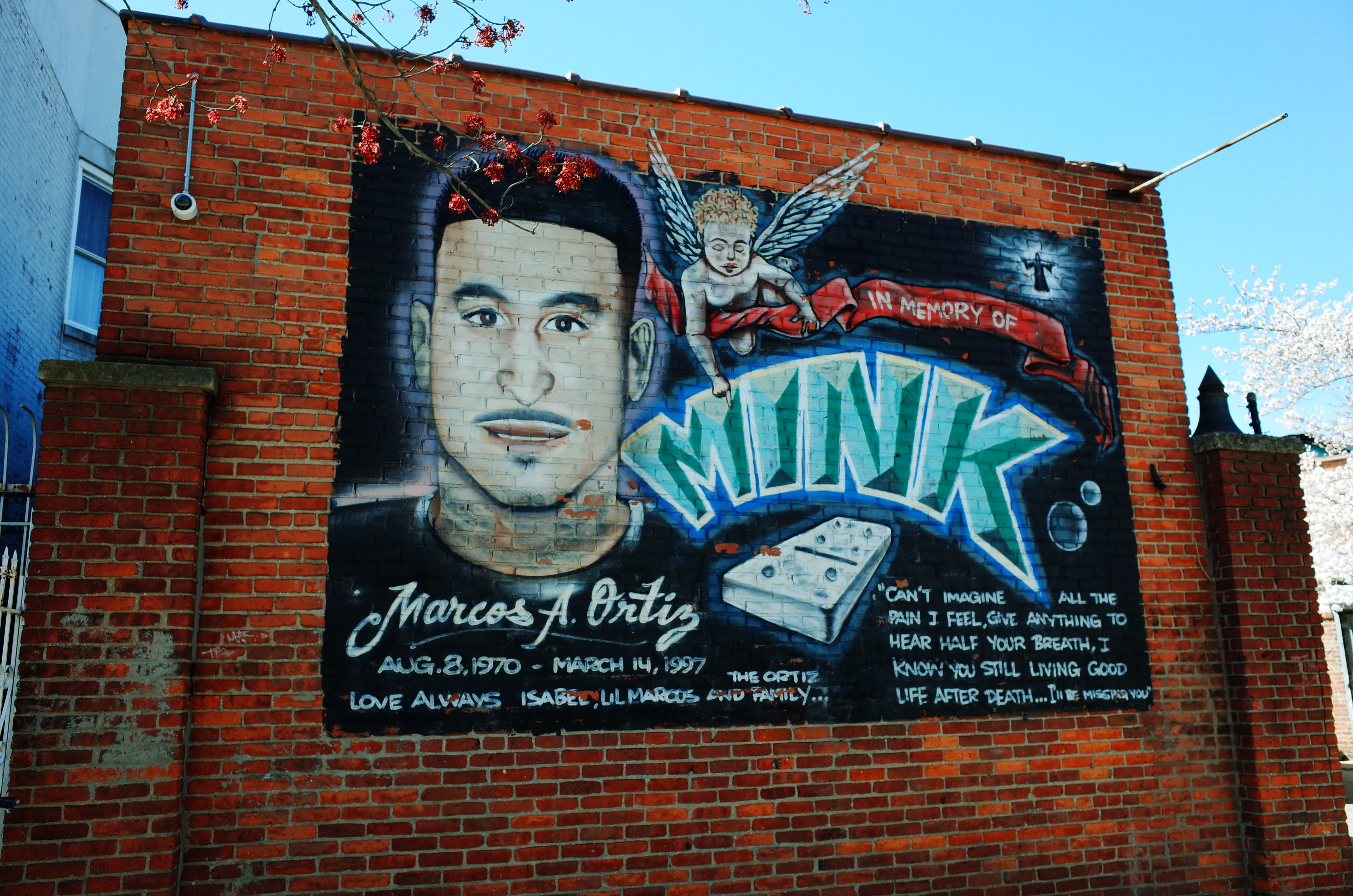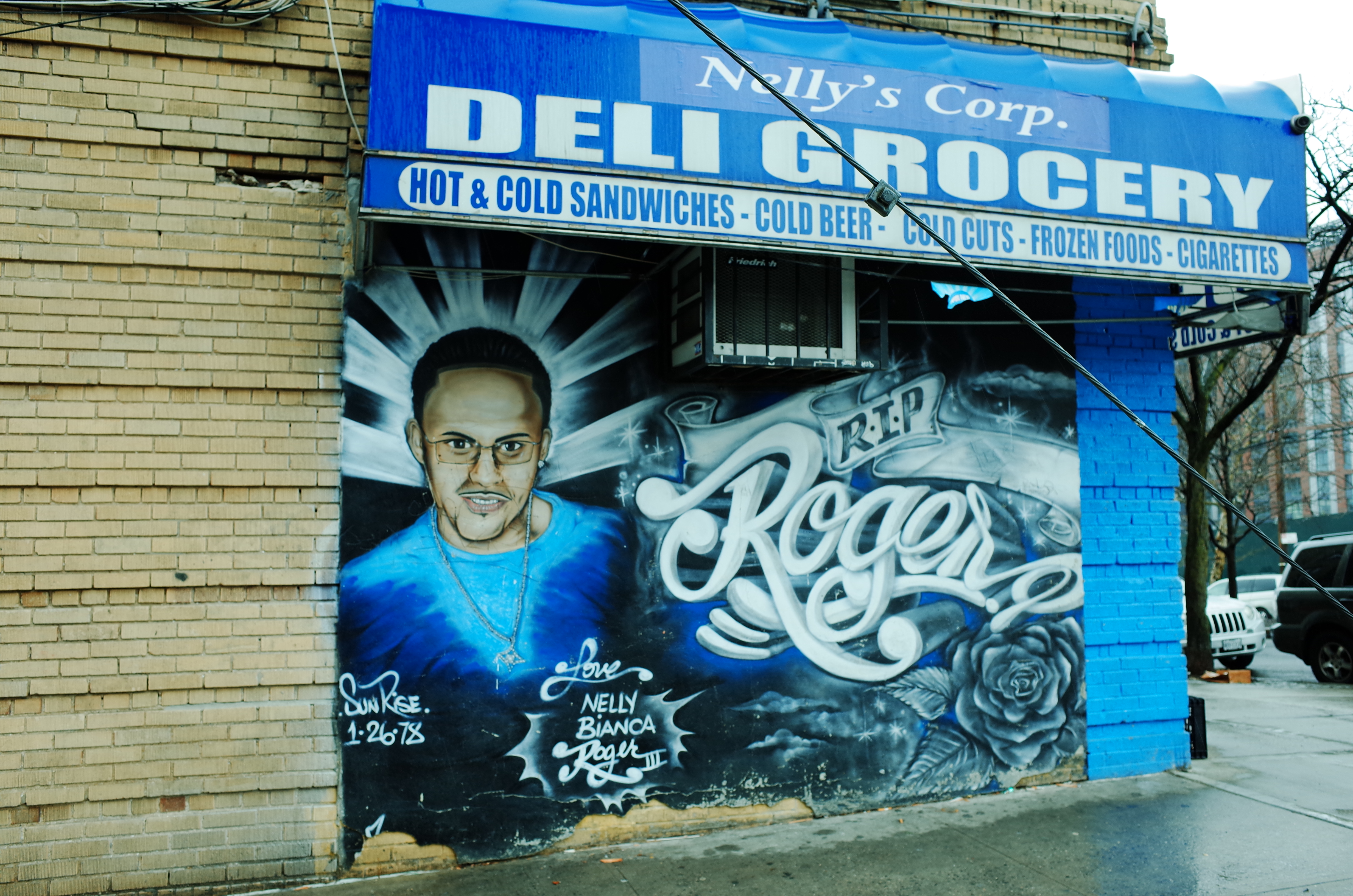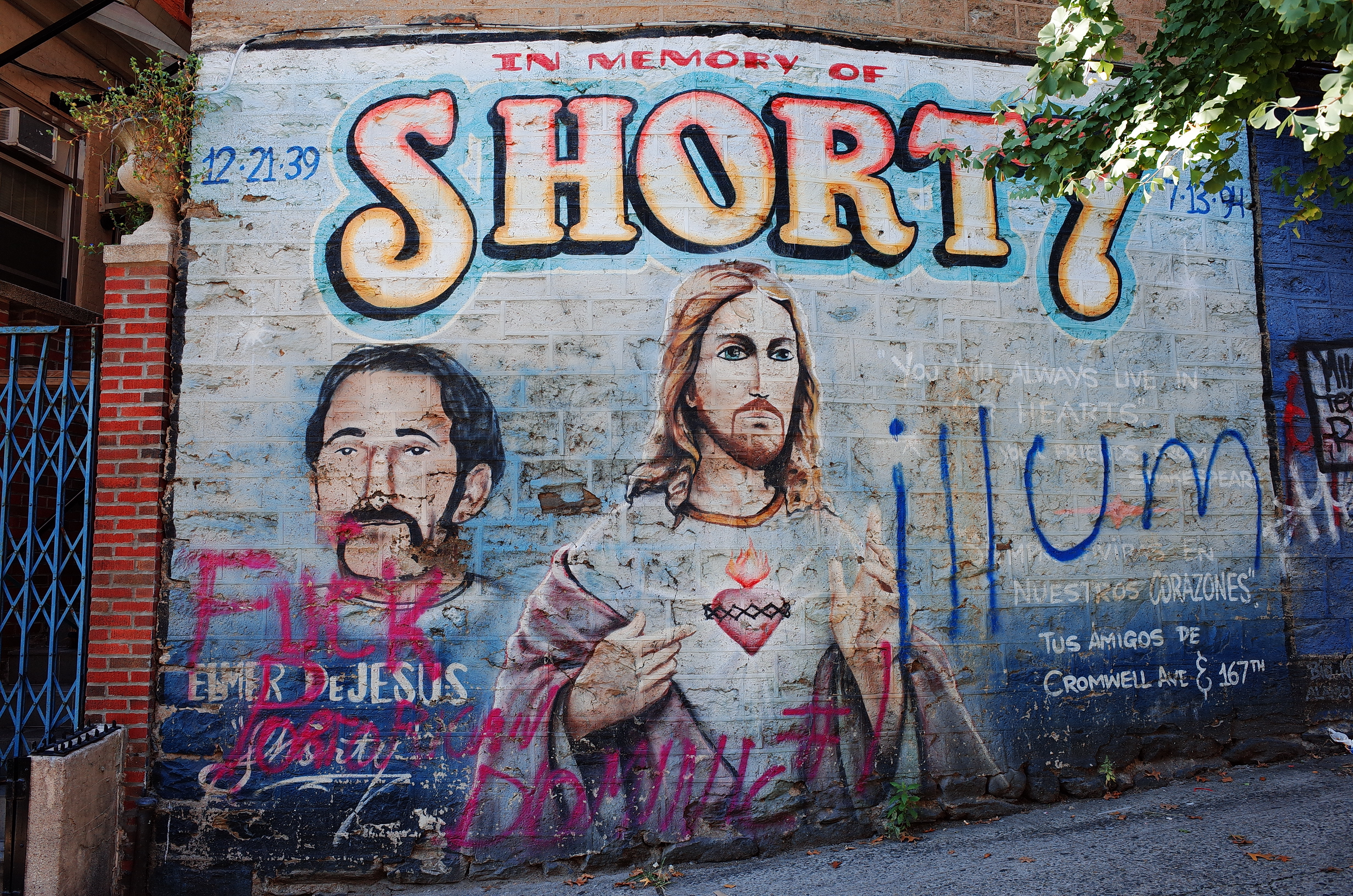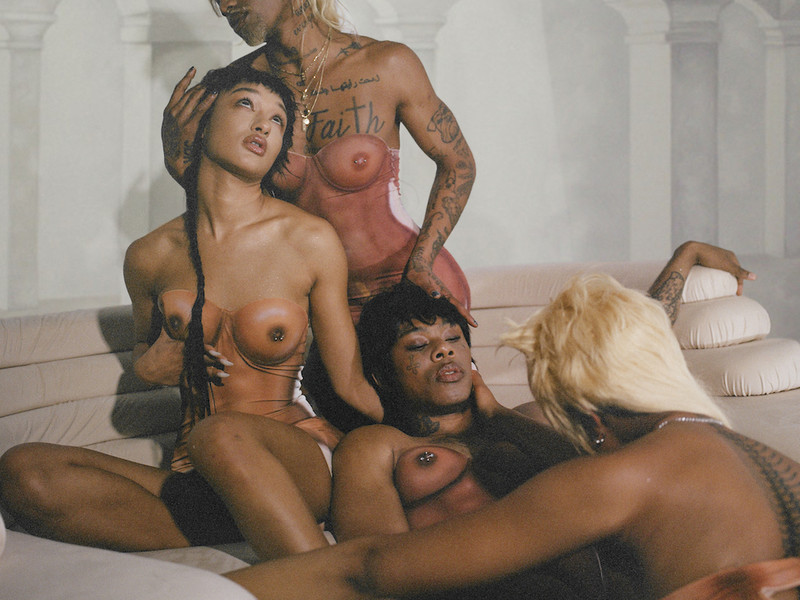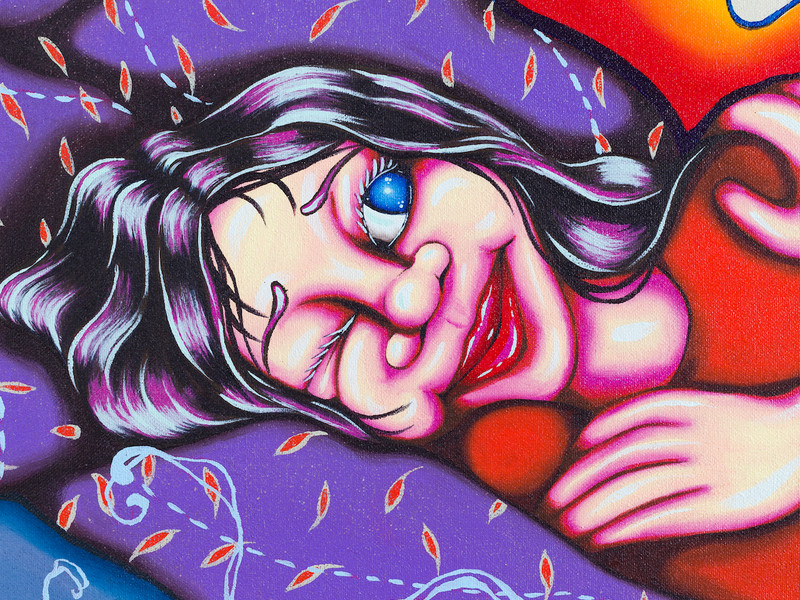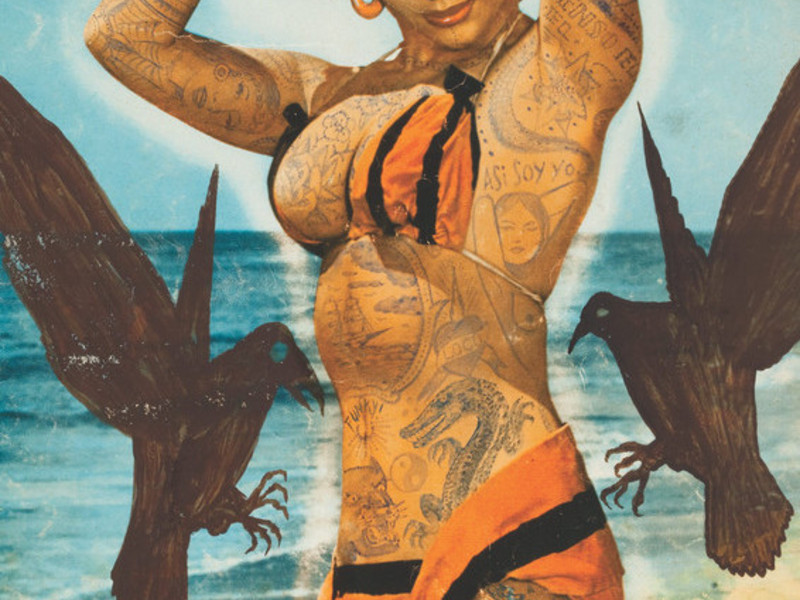Isaac Andrews' Universal Scenes
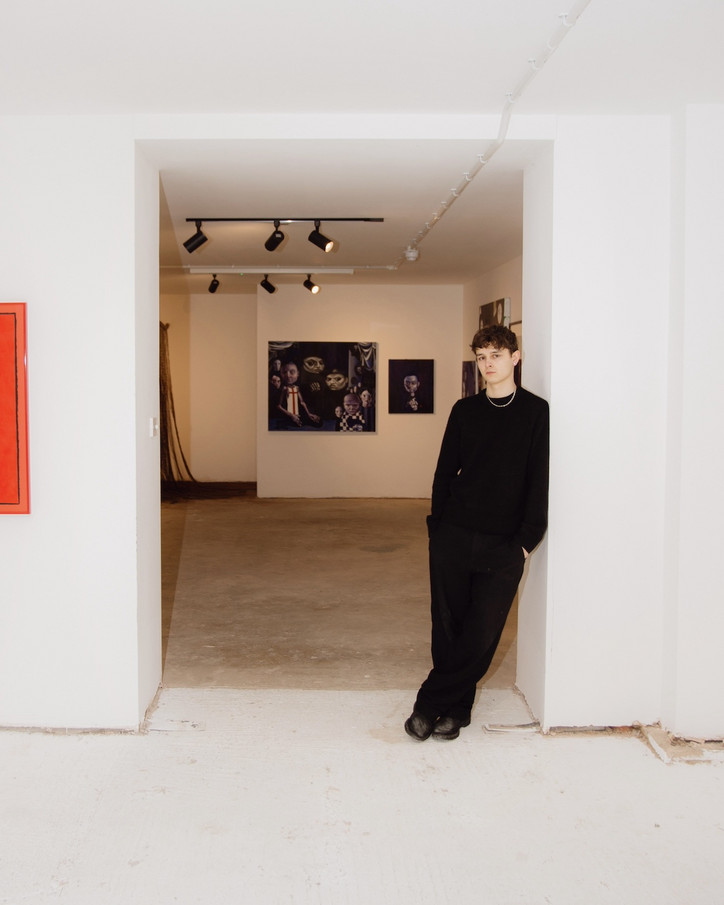
We can look at any one of Isaac’s pieces and understand almost immediately what it's about, or at least what we think it’s about. But that’s the beauty of Isaac’s work: no matter the subject matter, we see ourselves, or a friend, or someone we love in all of them. At just 21 years old, he has created a body of work reflective of the universal moments that connect us all.
Read our conversation about Isaac’s process and purpose as an artist below.
I feel like we’ve been in communication on and off since the days of the pandemic. Visually, I’ve seen your work change so much from four years ago to today. Do you feel like there was a switch in your life that resulted in this change?
Yes, for sure. I went to see this Jennifer Packer show at Serpentine in around 2021,and at the time I was doing quite abstract paintings – aesthetically they were pretty but they weren’t really saying much. I went to that show, and it made me fall in love with painting people. The way she paints people, it makes you feel this really deep connection. I thought it was really fascinating, and so I decided I wanted to start painting people. Before this change, my work was much more self-referential. I did self portraits, about mental health, and I used myself as the subject of my work. But around the start of 2023, I lost my very close friend, and that’s when my work really shifted towards this theme of human connection. So now, my work is about relationships, and moments of intimacy and human connection.
That’s super interesting. I see the conceptual shifts, and change in emotional approach to your work, but I also see a huge shift in the techniques you are using — all these lines that you create through negative space, and the vibrant use of color. Where did that come from?
Well, back when I was painting self-portraits, I wasn’t particularly good at drawing, so I was always drawing these very loose silhouettes with line work, and I liked it a lot but the colors weren’t quite right. I literally had to teach myself how to paint with oil — I was learning through YouTube — and one of the things it taught me was this process of doing a wash to stain your canvas. Most people paint over that wash, but I really liked that color and the tone it gives the whole canvas — it’s almost like a sepia photograph that feels really nostalgic. So I kept that color visible through the line work which massively changed the color palette of all my paintings. And not just the color of this process shows, but also the texture. Painting the canvas with this burnt umber and white mix, then washing it down with this very toxic turpentine creates this almost wood-like texture, making my paintings look like they’re printed on a wood block.
So you’re kind of allowing the process of the medium to show itself in the final piece.
Yeah, I just thought, it’s such a nice color, why get rid of it? And also, this color became the color for all the skintones in my pieces. With my current style, that is intentionally very 2D and very flat, the sepia wash and the line work replaces any shading, on faces or on things like draped clothes. In my paintings, I want there to be no evident light source, and the intention behind that is that my paintings are slightly disconnected from the real world, they aren’t real life. The figures aren’t real, none of them are real people. They are everyman type figures, so they can be universally understood. By doing this, you can understand what the human emotions of the painting are, while not assigning these emotions to specific people.
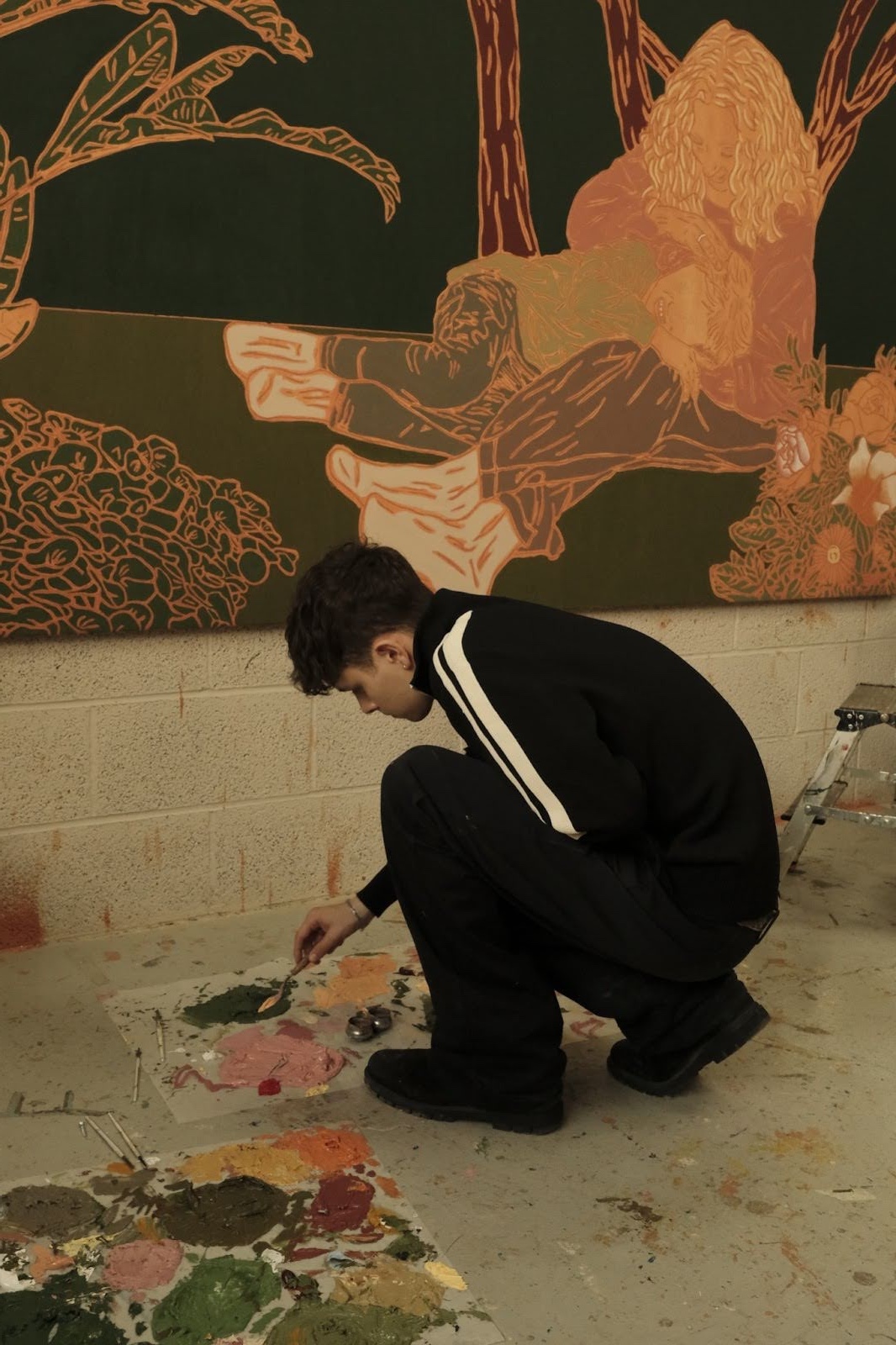
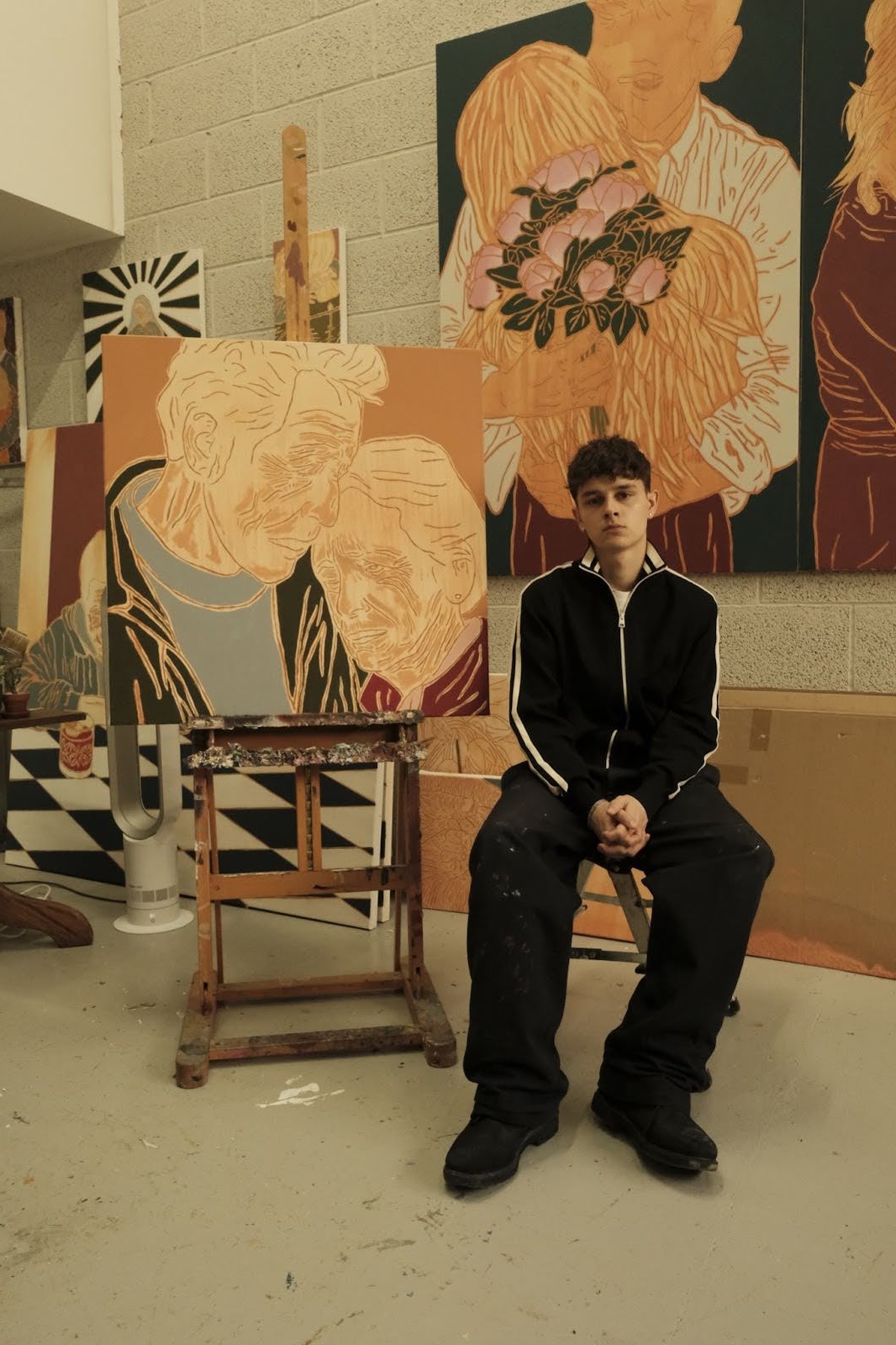
I think this sense of ambiguity you’ve created in the figures is super effective. As the audience, we can apply ourselves to the work completely. It’s like reading a book where the character traits of the protagonist are left quite open, and you can put yourself in their shoes.
That’s exactly the intention. There’s no context to the pieces, no branded clothes, no specific time, or specific place. And that's what I love so much about the ambiguity, how I’ve had people come up to me at shows and say, “This painting is my grandad, this painting is my wife, this is my daughter, etc.” People are able to take what they need and what they see from my paintings. I always say that I have a story to tell, but it's not the story, it's just a story. And because my work concerns the human experience, and all these human emotions, you don’t always know the story but you can always understand how it feels. When art is too prescriptive, it loses its magic.
Your work is evidently expressive, and stemming from the self but you’ve also done some commercial work in your career. Do you feel that there is a disconnect in creating fine art for commercial purposes?
Definitely, the intentions behind the two are very different. I’ve kind of turned down quite a bit of commercial work for that reason, partly time — if I’m painting, I want it to be something I want to paint. But on the other hand, there has been commercial work that I’ve enjoyed, like painting guests at an event for Miu Miu, where I got to practice painting in a completely different environment and timeframe.
Now you’ve done these super cool collabs with some major brands, but rewinding to your beginnings as a younger, less established artist, do you feel that there is enough support for aspiring creatives in the industry?
No, there’s literally no support. At the time, I remember thinking “Why isn’t anyone helping me out?” but in hindsight, it actually forced me to do things like throw my first exhibition at fifteen. And for bigger opportunities, and working with brands, I’m so glad those things are happening now instead of back then because I wouldn’t have been as ready back then – it forced me to realize that the work wasn’t there quite yet so I had to keep working and improving. I feel like I’m still very much in that phase of trying to get better and better and better, to put myself in the best position possible.
Experiencing how there aren’t many spaces for aspiring artists to showcase their work, inspired me to put together things like group shows. In 2021, I was working with Converse at the time, and pitched them the idea of an artist group show. They were down, so we were able to give fifteen artists the space to showcase their work. It gave a lot of these less established artists the opportunity to show their work in a more professional setting, and larger platform. And we did another one again about two months ago. I want to keep doing these things for sure, it’s building communities around art.
It's great that you’re creating creative spaces that didn’t exist for you when you were starting. I’m also curious to know, with time and practice of your art, has your creative process evolved?
Yes, definitely. I plan my pieces a lot more now. Especially for these larger ones, I plan them quite meticulously. A lot of the time, artists say that they won’t know what their end product will look like, but for me, I pretty much always know what my paintings are going to look like. The colors might change, but compositionally I know where everything is. And this is mostly because of my process with the line work — it being the very first layer I work with. Once I add the color blocking on, I can’t go back and add the lines back on top of it because it has to sit on the original layer of the canvas. I guess my paintings are kind of like coloring inside the lines. A lot of artists can let their painting process guide them to the final product, but I find that I need to be quite aware of my planning and end goal.
Nowadays, I also work on pieces simultaneously and it helps me build a cohesive body of work. For example, I’ll be working on a piece with a certain color, and then I’ll go and apply that same color to another piece that I’ve started. The look of one piece will end up influencing the other pieces around it.
That’s interesting, do you also feel that working on one painting sparks inspiration for the concept or subject matter of another painting?
Definitely, yes. For example, this piece I’m working on right now for Tate Modern, it’s influenced by another piece at the gallery, but one of the reasons I chose that piece is because it visually connects to my flower series paintings, so kind of referencing the other pieces I have worked on. Often, I’ll paint a certain subject matter, such as Mother and Daughter, and will continue that subject matter in multiple of my pieces.
Speaking of your flower series, it really stands out to me because I noticed that while all your color blocking is flat, you’ve visually separated the flowers by painting them in gradients.
Yes, so the first of the flower series was a painting of just someone’s hands and then flowers, taking up the entire canvas. And this start of the series stemmed from an interest in looking at the psychology of relationships and gift giving. Specifically, how the gifting of flowers can actually mean so many things, like a romantic gift, or a celebratory thing, or a sympathy thing. So yes, I wanted to focus on the symbolism of flowers in human relationships and decided to give them some shading and gradient in order to give them a bit more life, while still not separating them too much from the flatness of my work. Within the composition of human figures, I really want the flowers to be the main focus, for them to stand out as much as possible.
And in these compositions of people, do you work from references?
A majority of the time, these aren’t real people I’m painting. Some compositions have a very loose photo reference of, for example, the form of the body while hugging. But I will say that I’m always taking mental notes of the way someone’s standing or sitting, or watching little altercations, or conversations between people on the tube. Subconsciously, there are scenes I see of the city that help inform my paintings. Especially in a big city like London, there’s always something going on and so these things stick with me and they translate into my work in one way or another.
We’ve talked about your work in the past, and its development to the present. Where do you see it going in the future?
So obviously, to keep painting is the main focus of my practice. But I also want to go into filmmaking, and I’m in the very early stages of working on a short film. I actually used to act when I was younger but realized that I might want to be on the other side of the camera. My paintings right now are sort of like cinema stills, so this short film I’m working on with a friend is based on my paintings. It deals with two sisters losing their mother, and surrounds the relationship of the two through quite a naive and child-like perspective.
I can see that translating beautifully. Your paintings capture scenes of life, and that is exactly the essence of film. Thanks for chatting with us!
